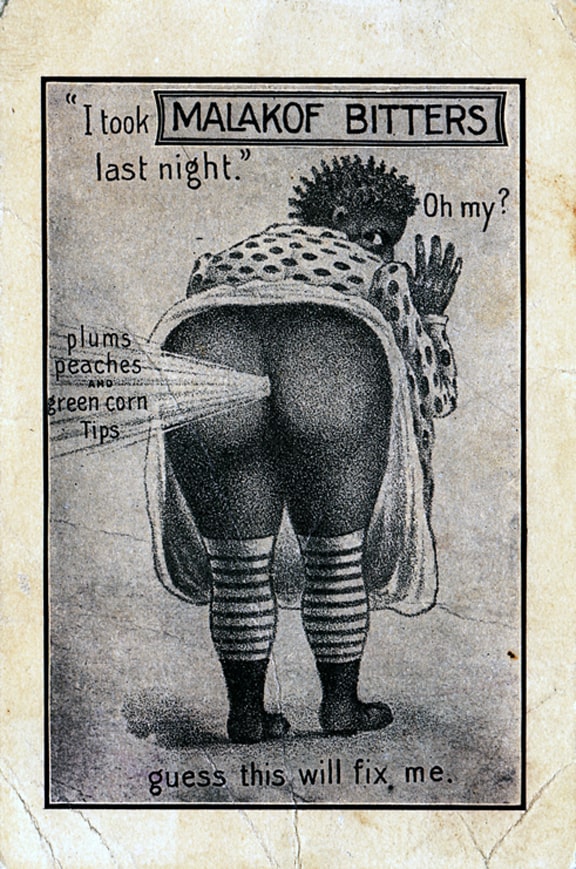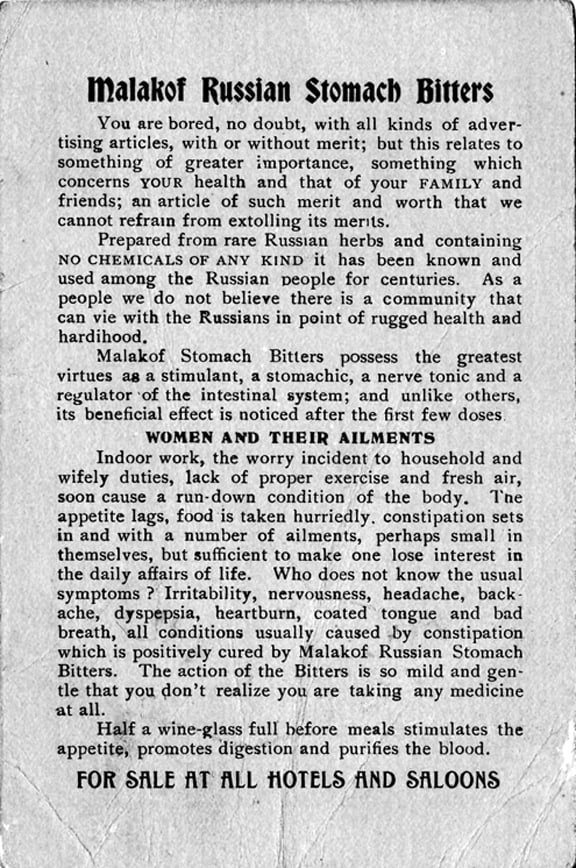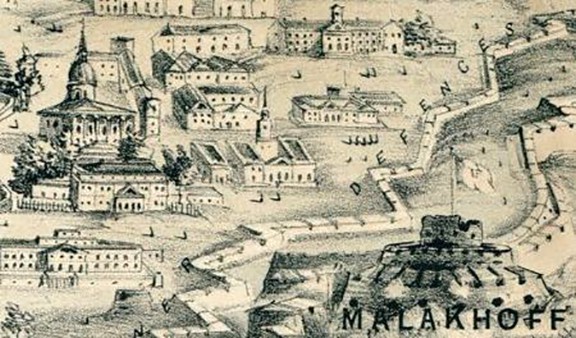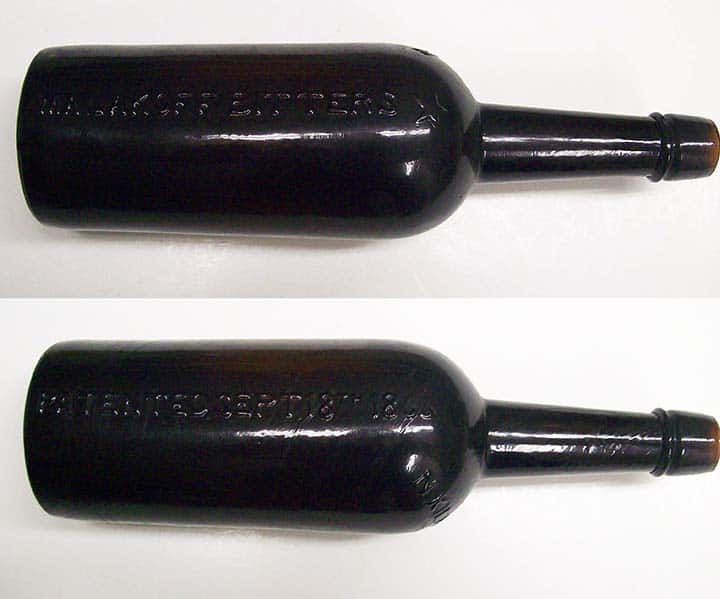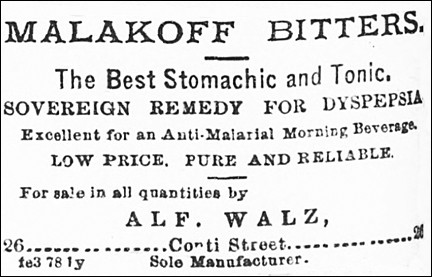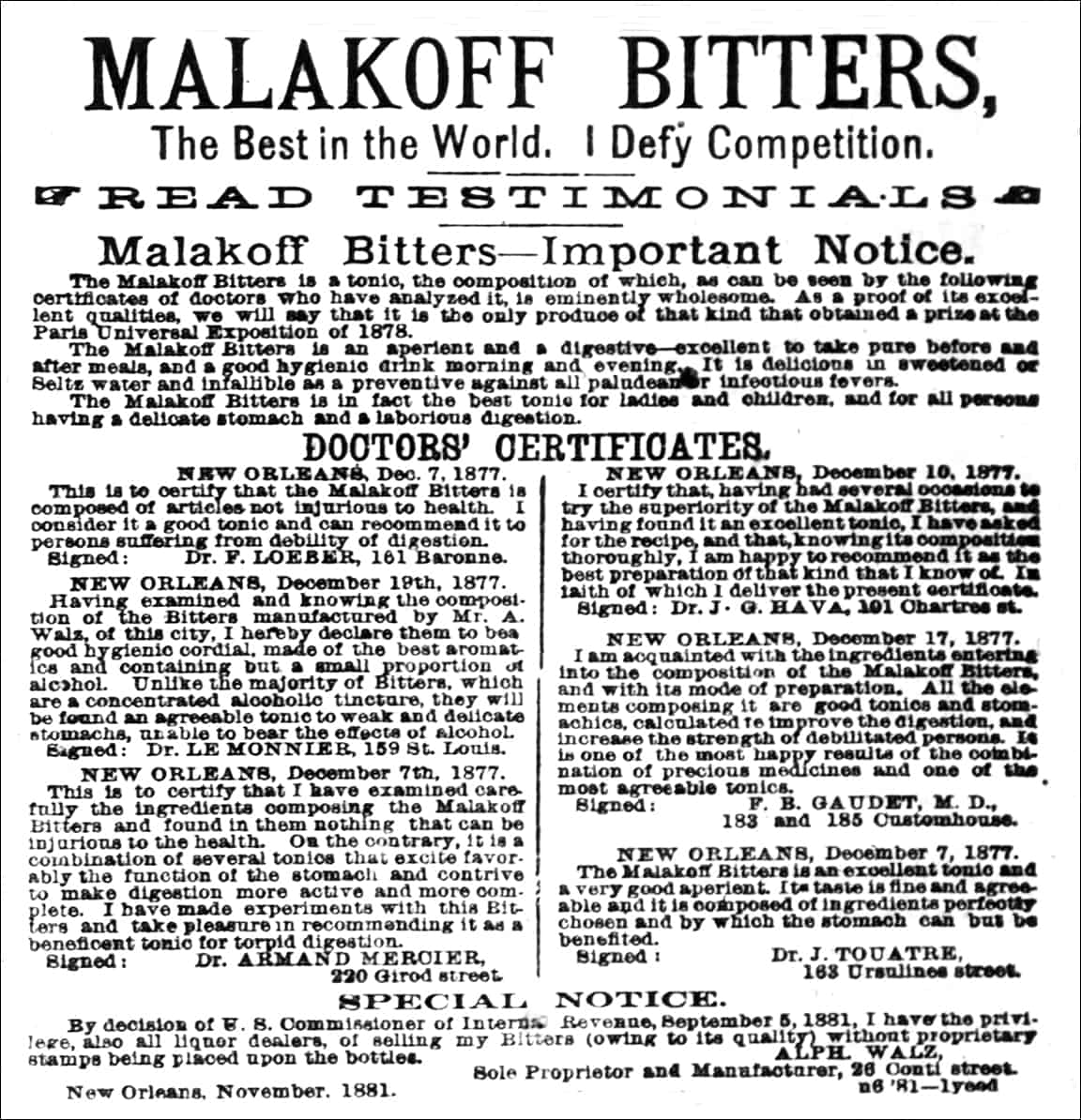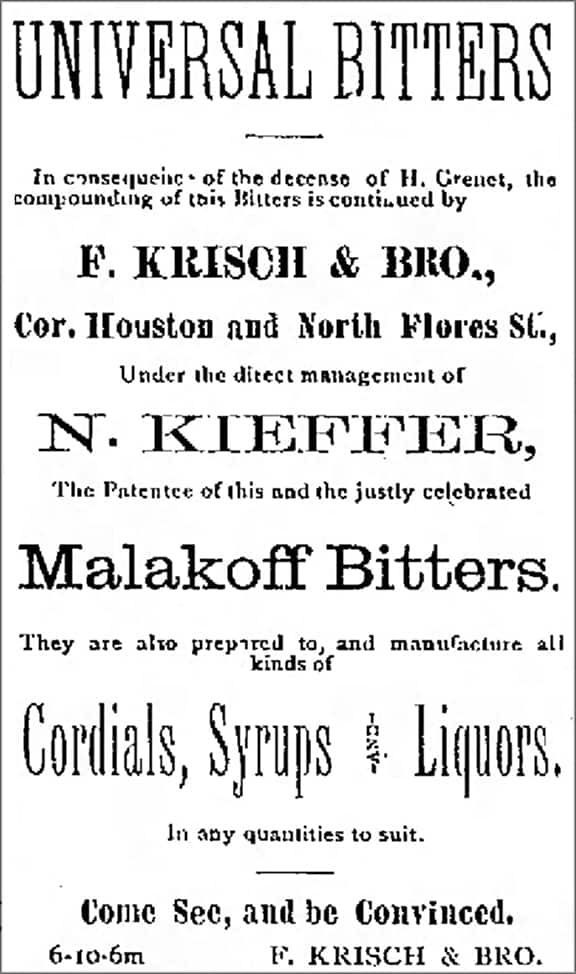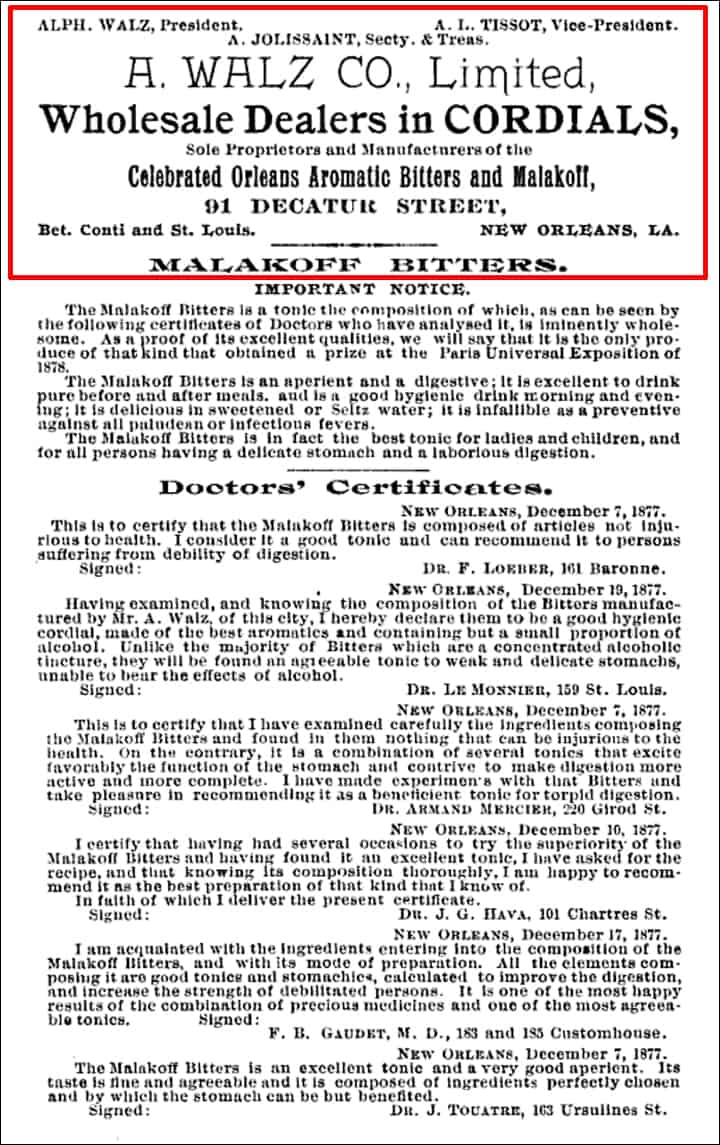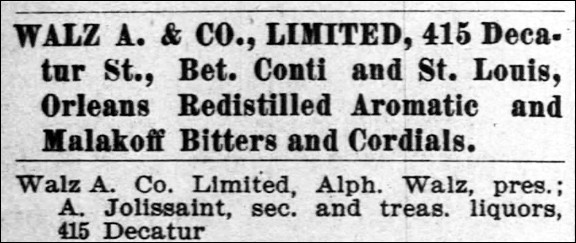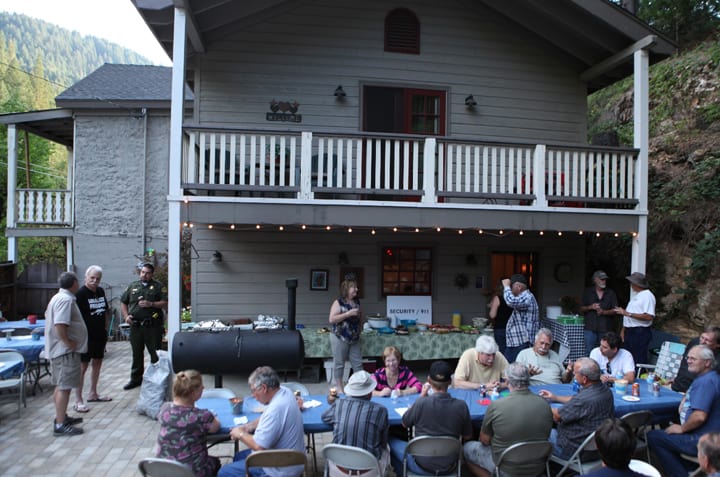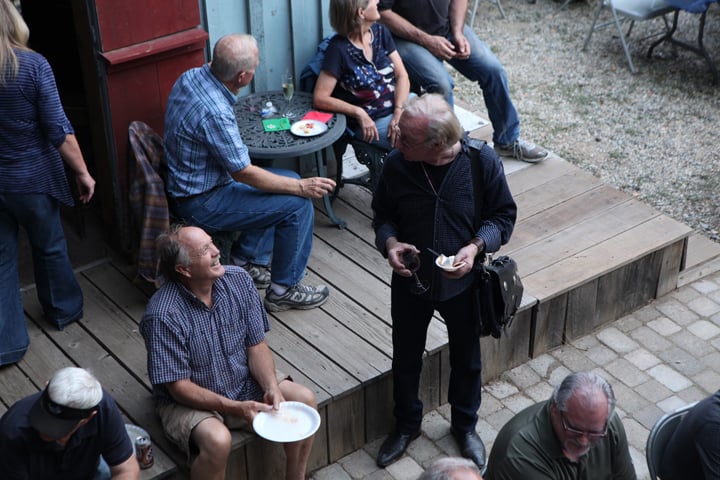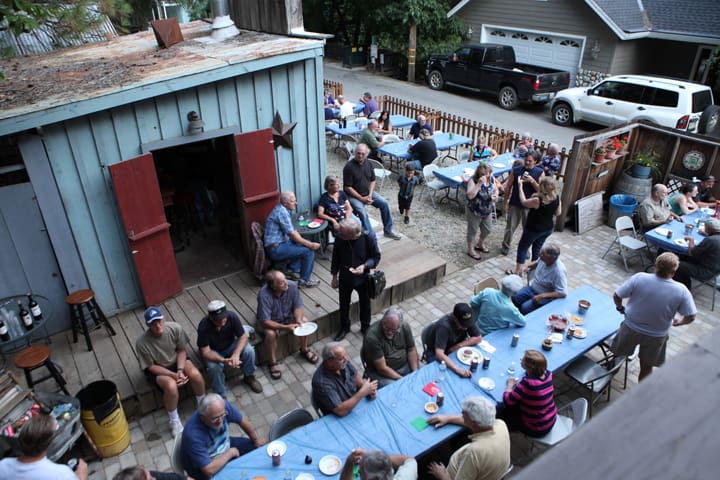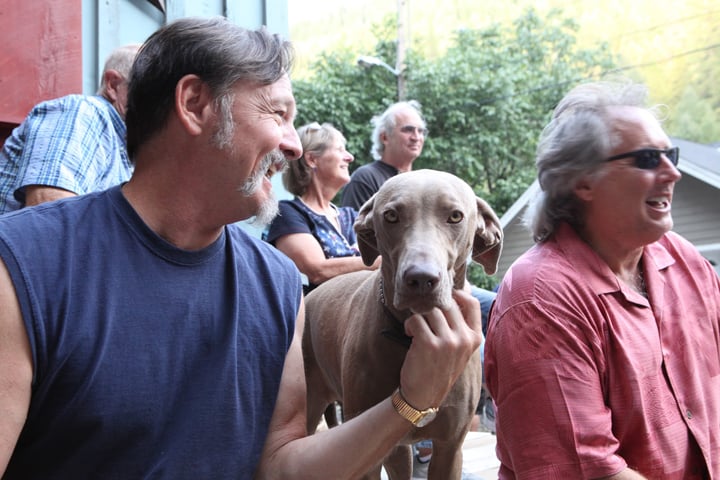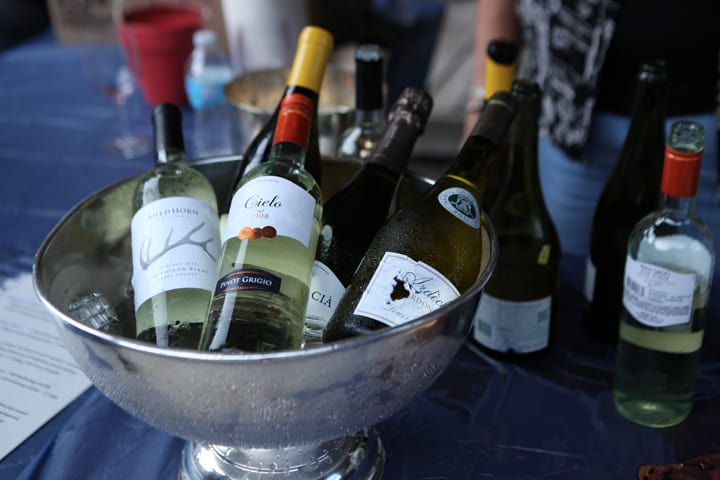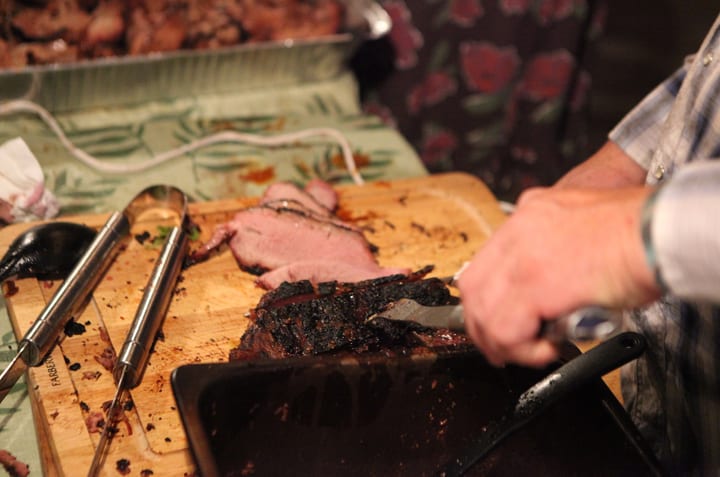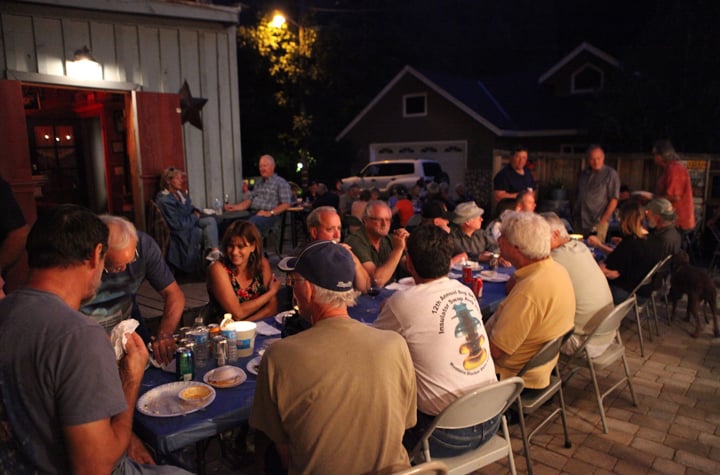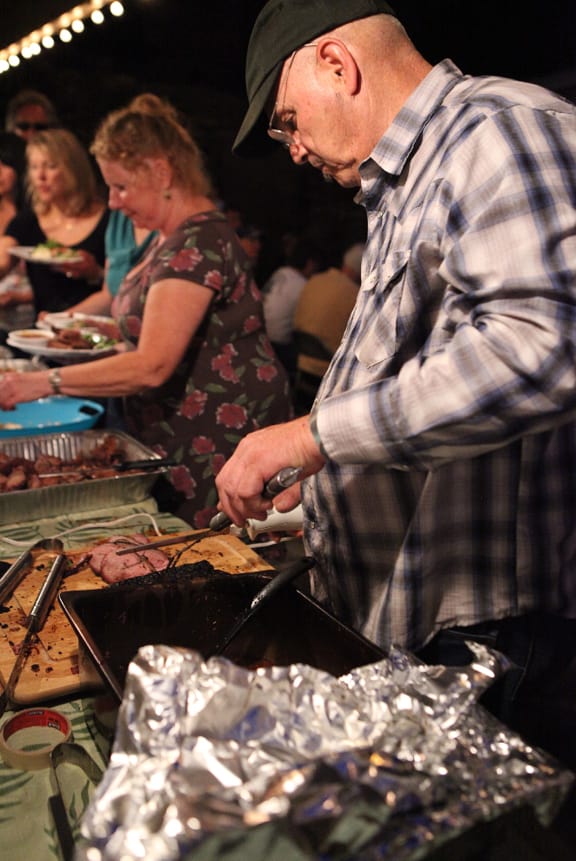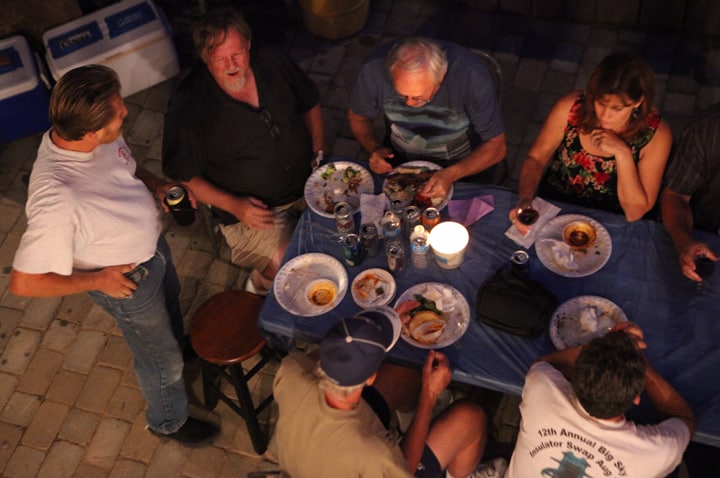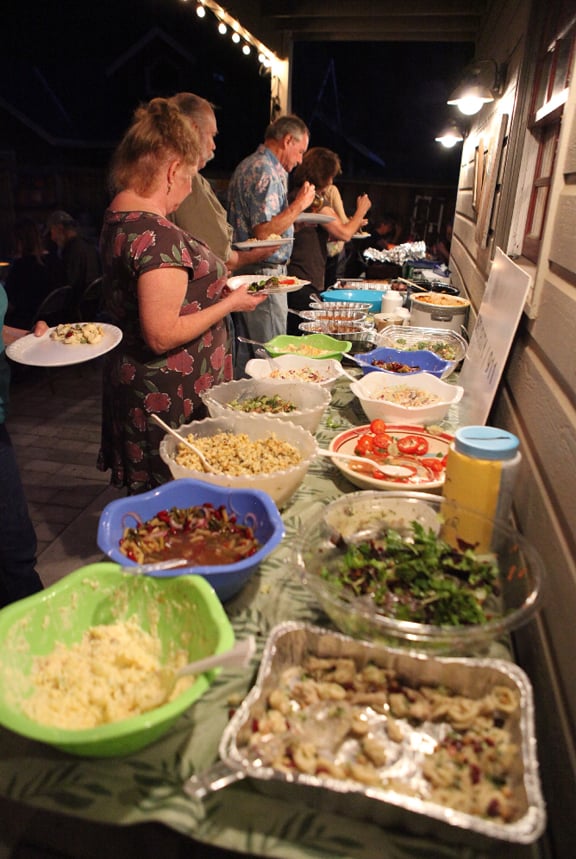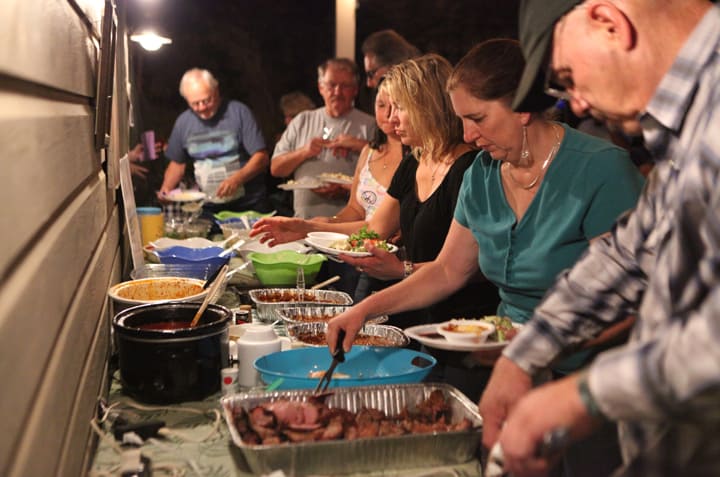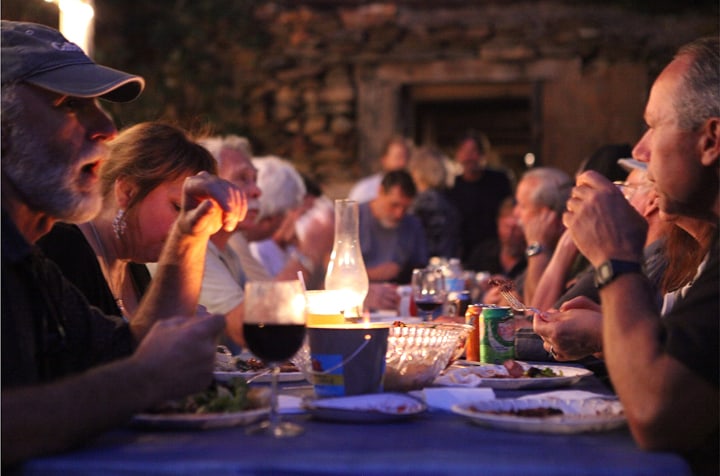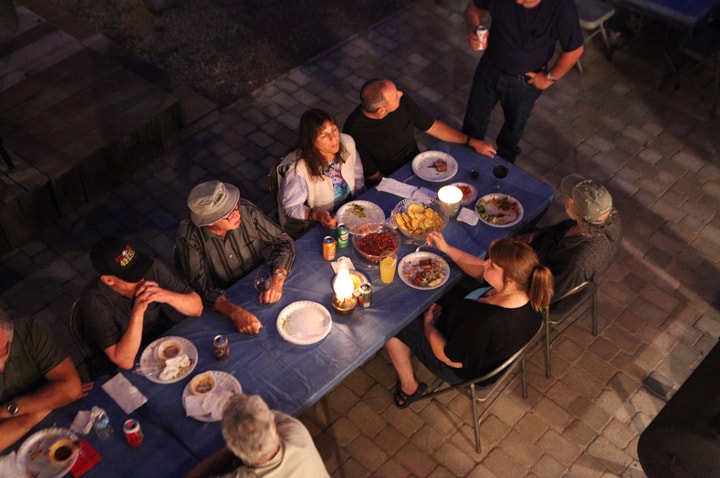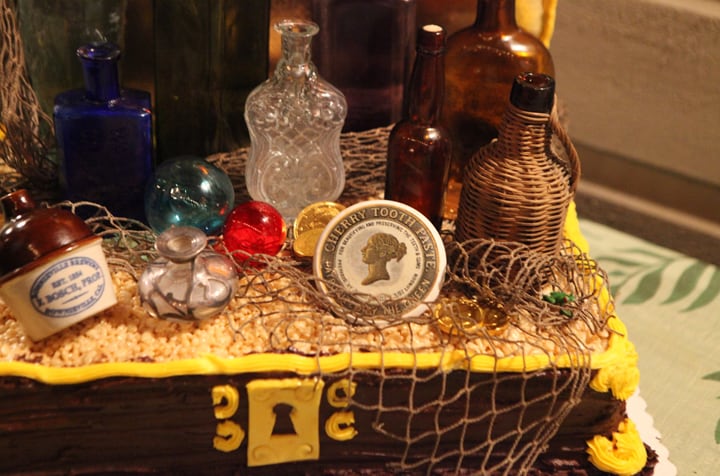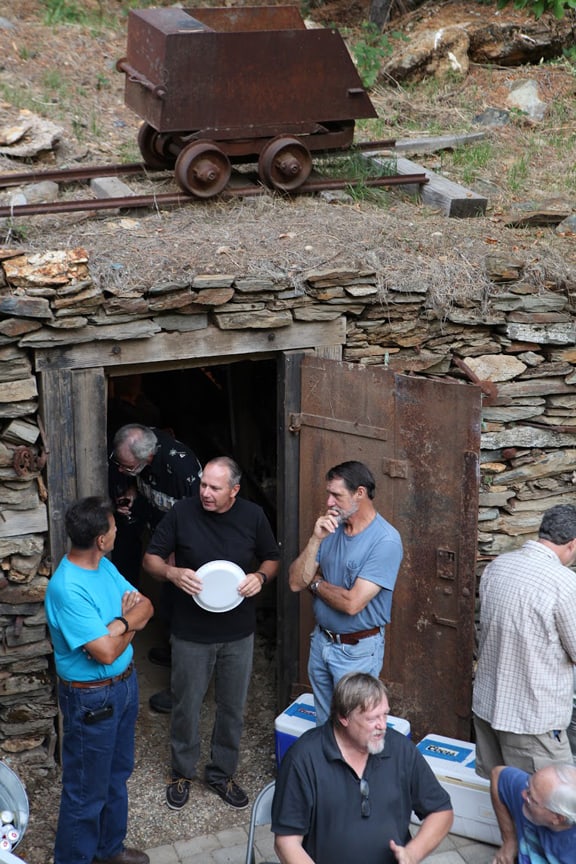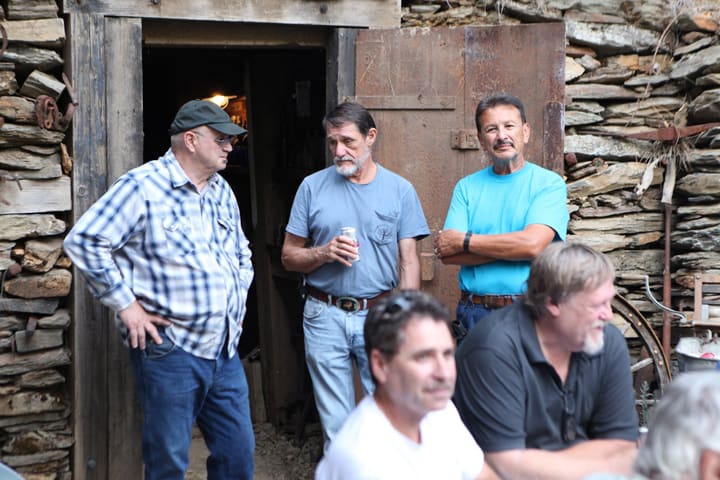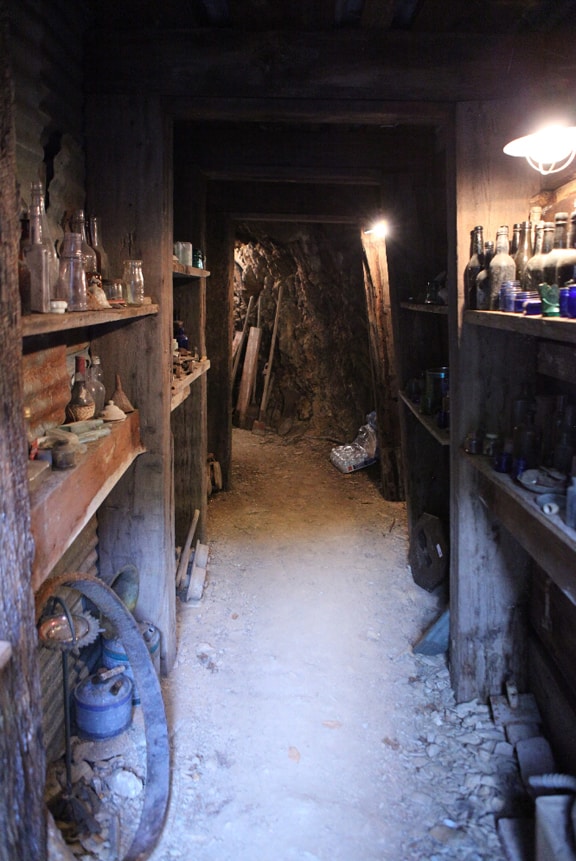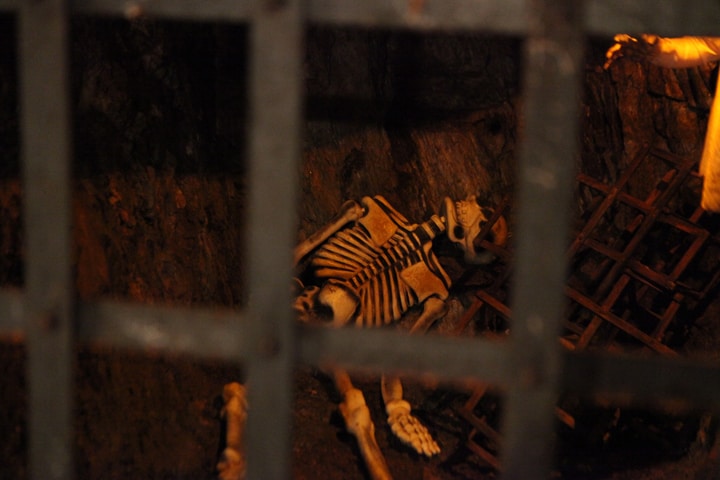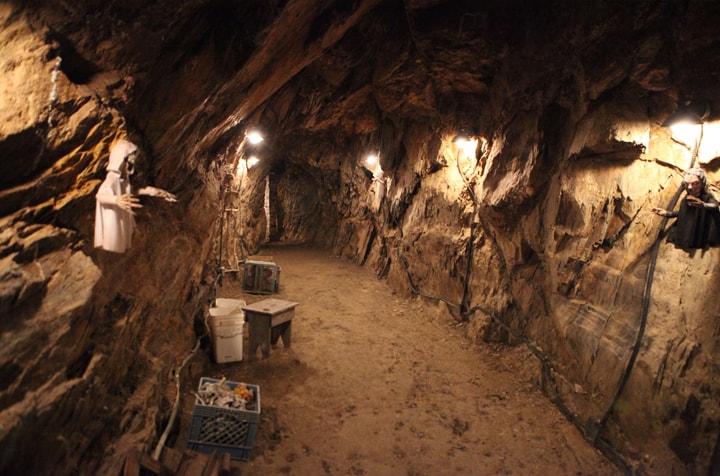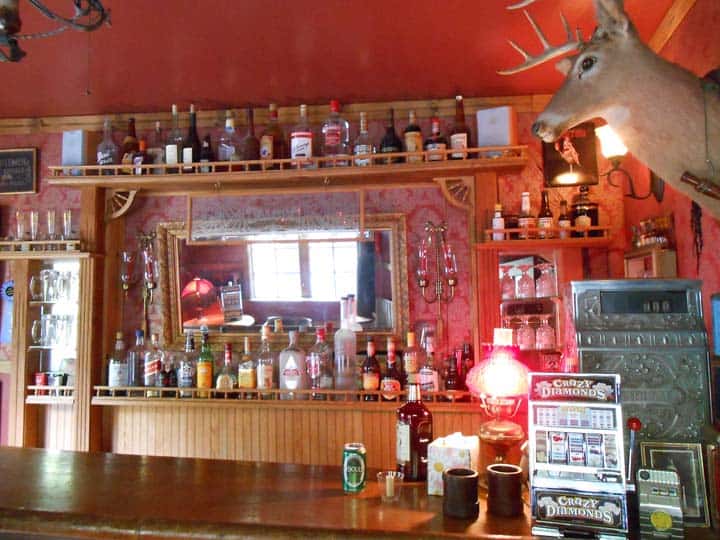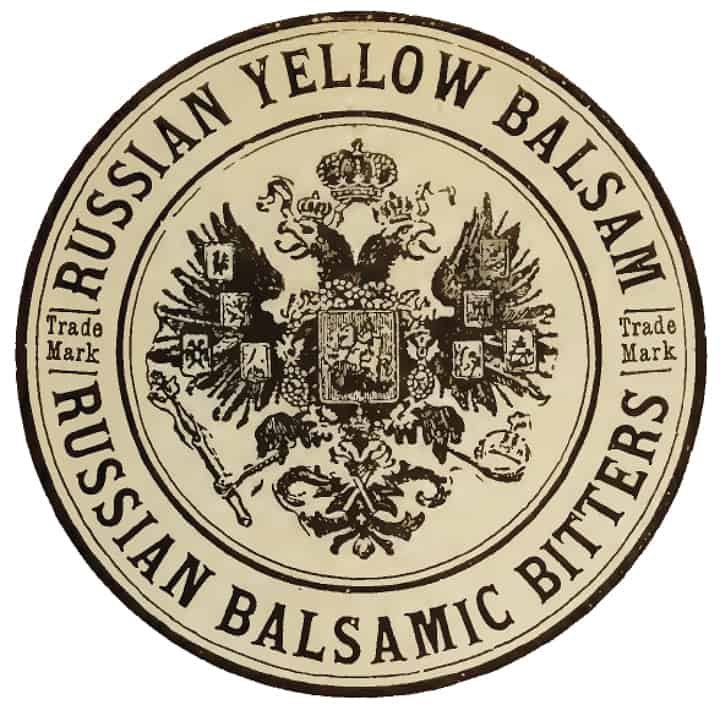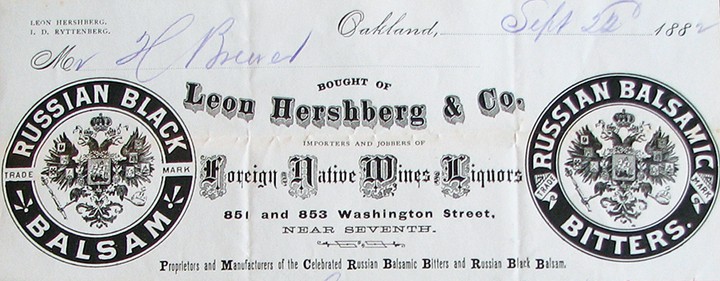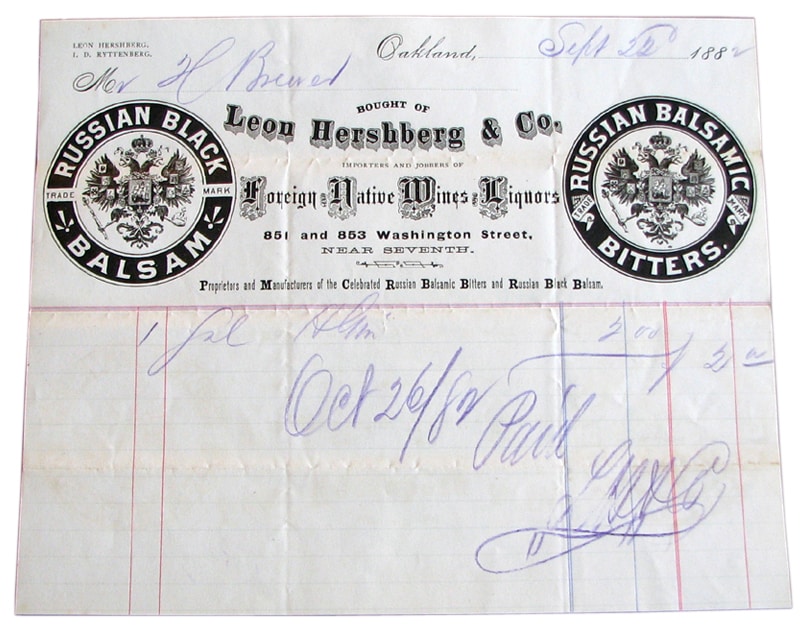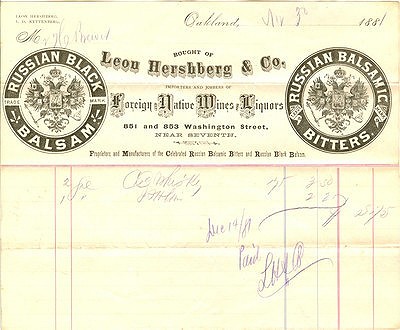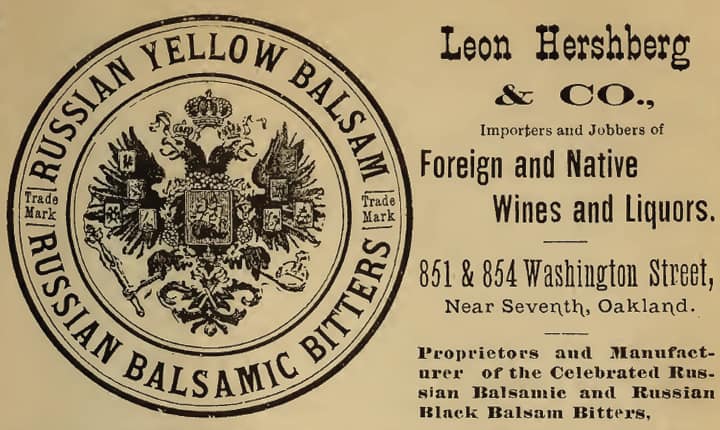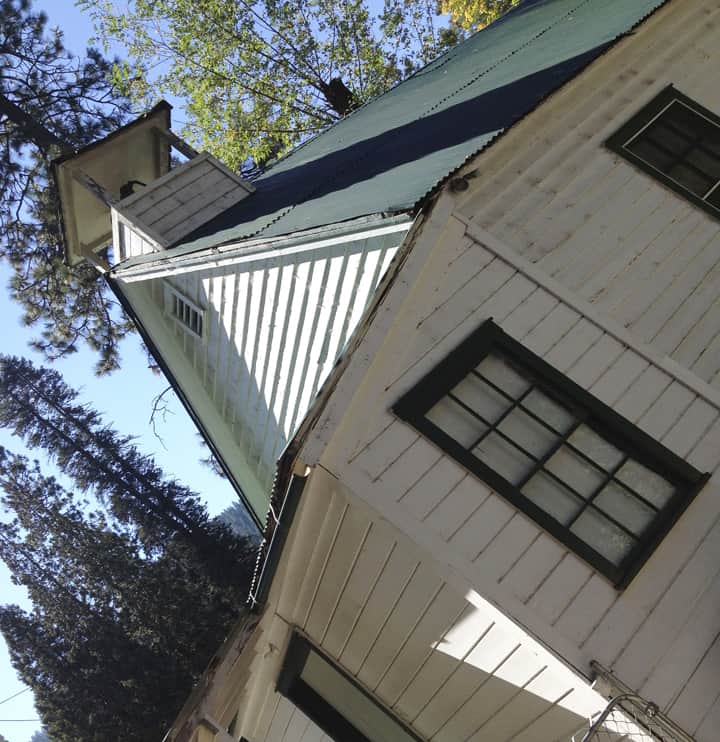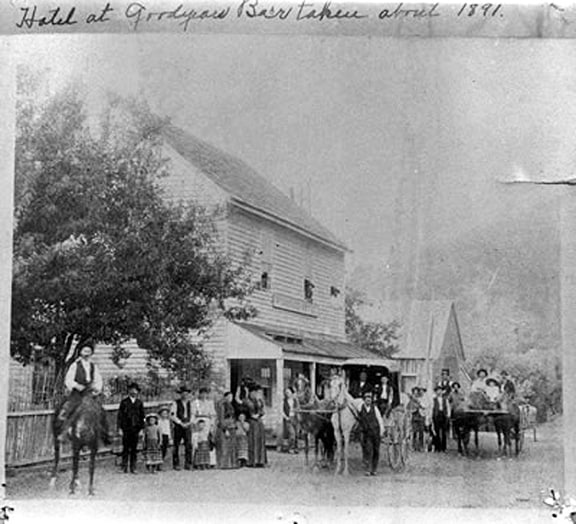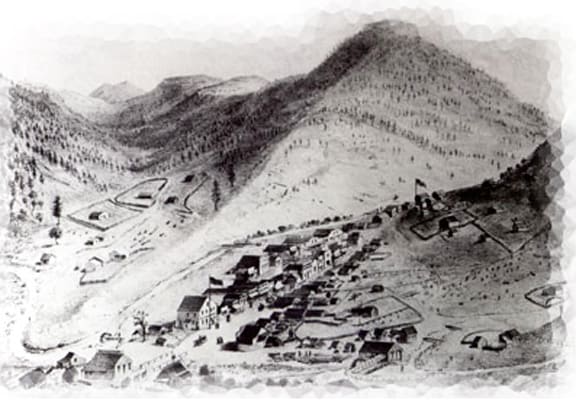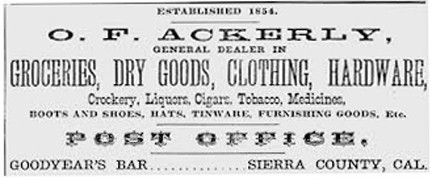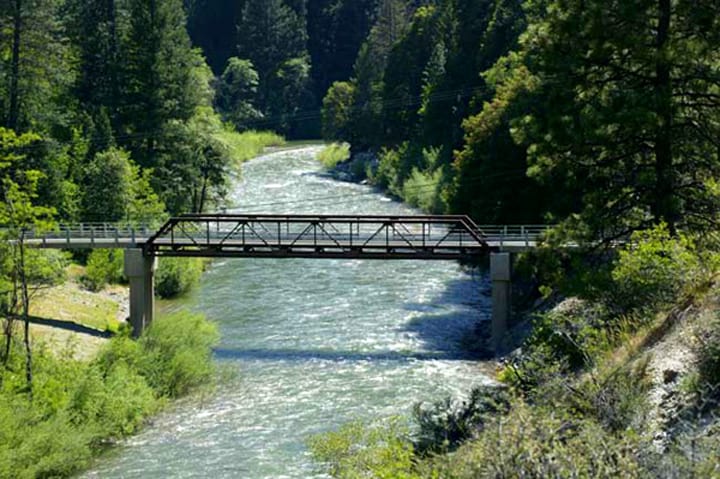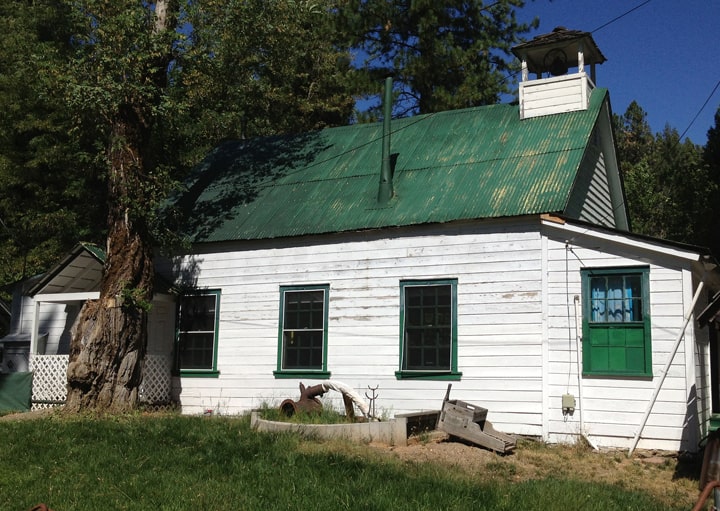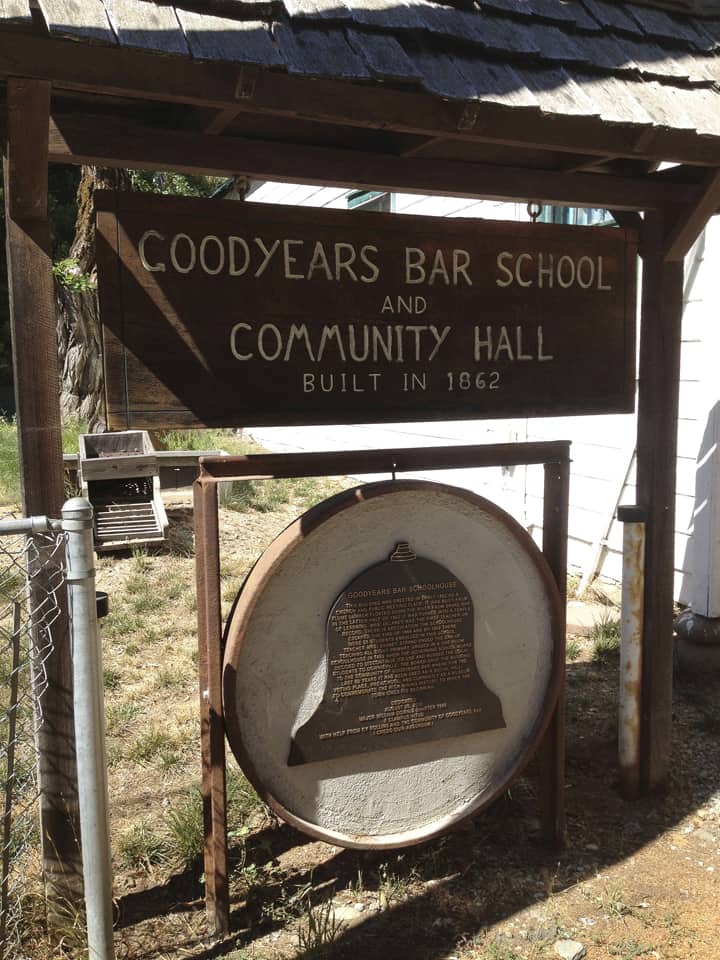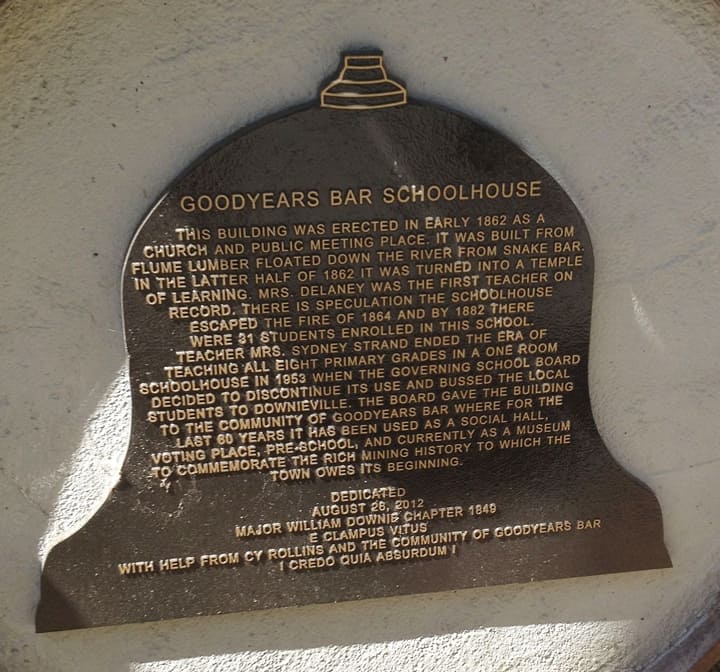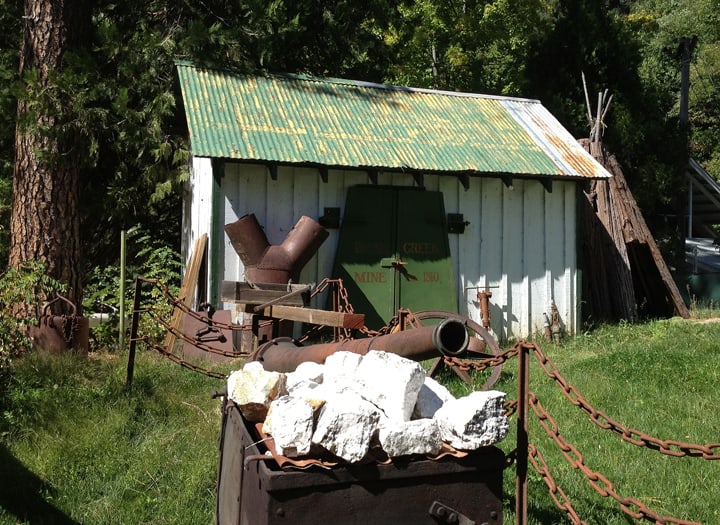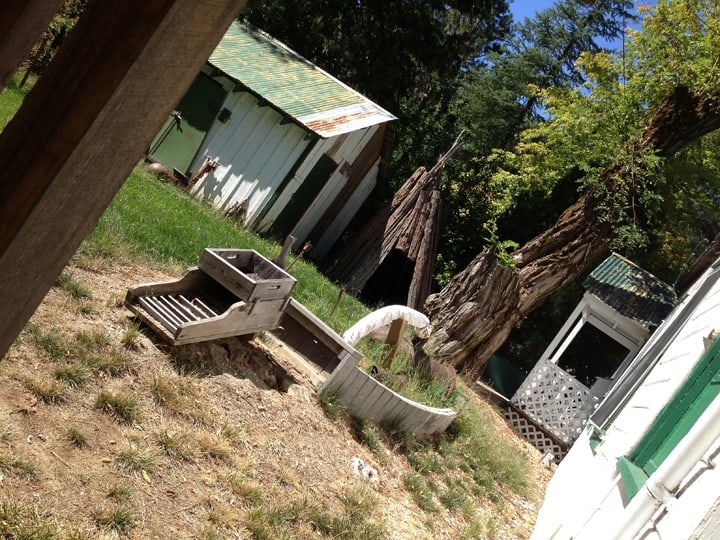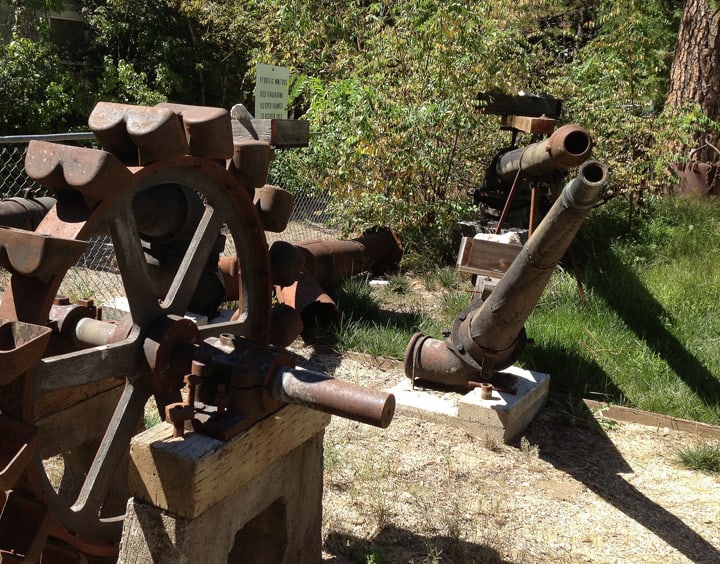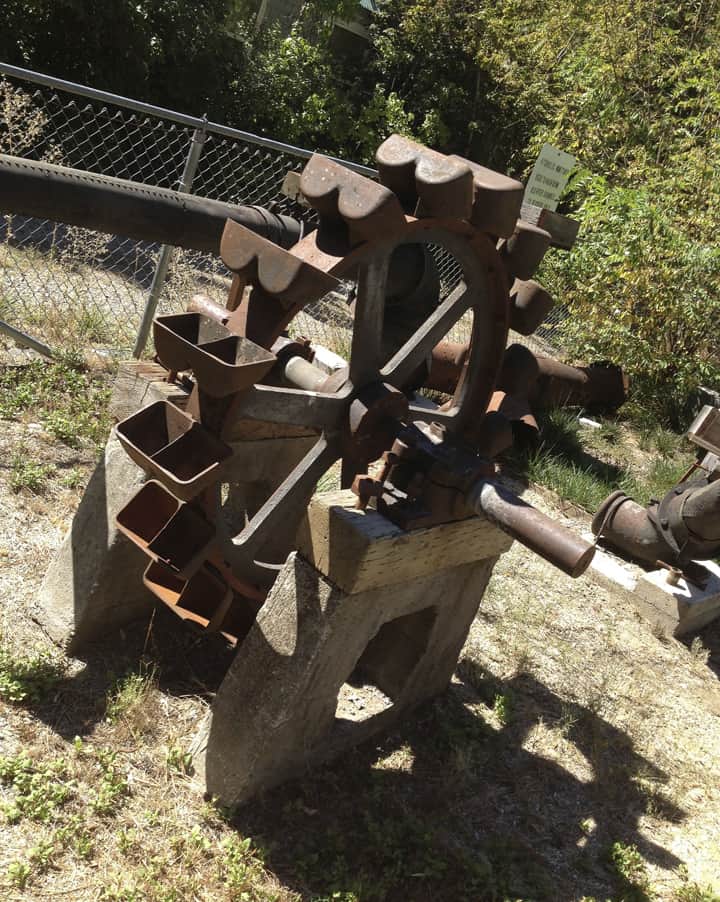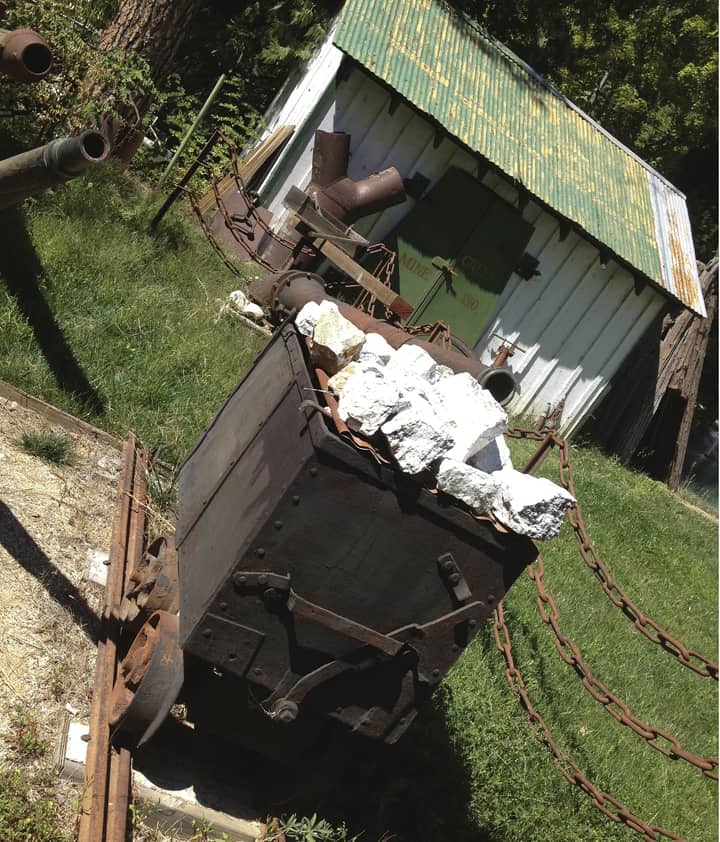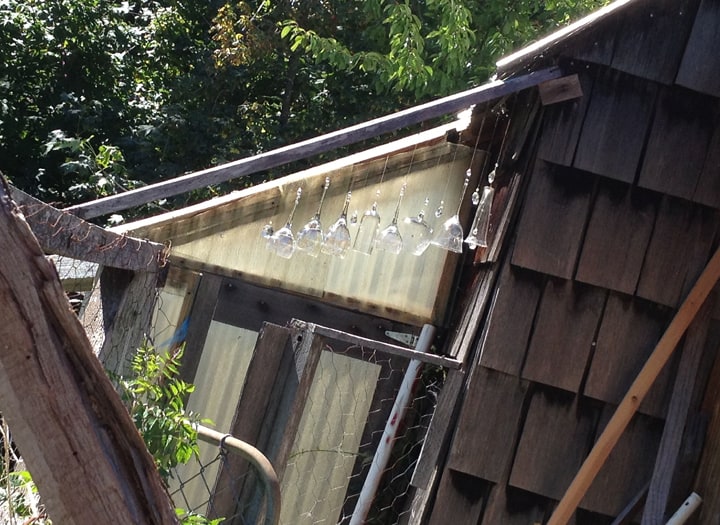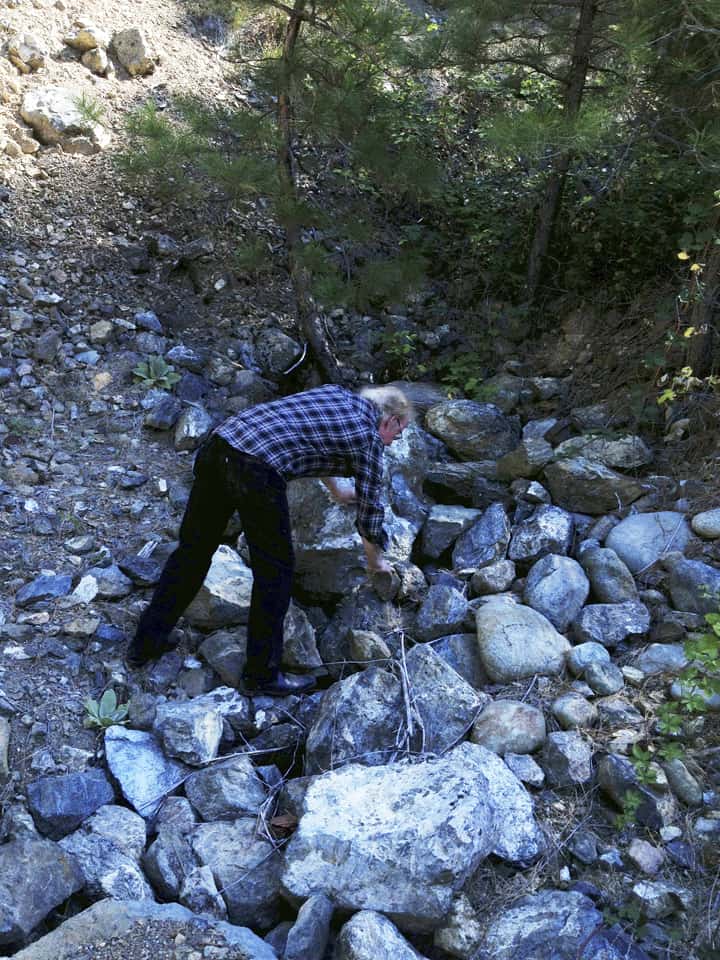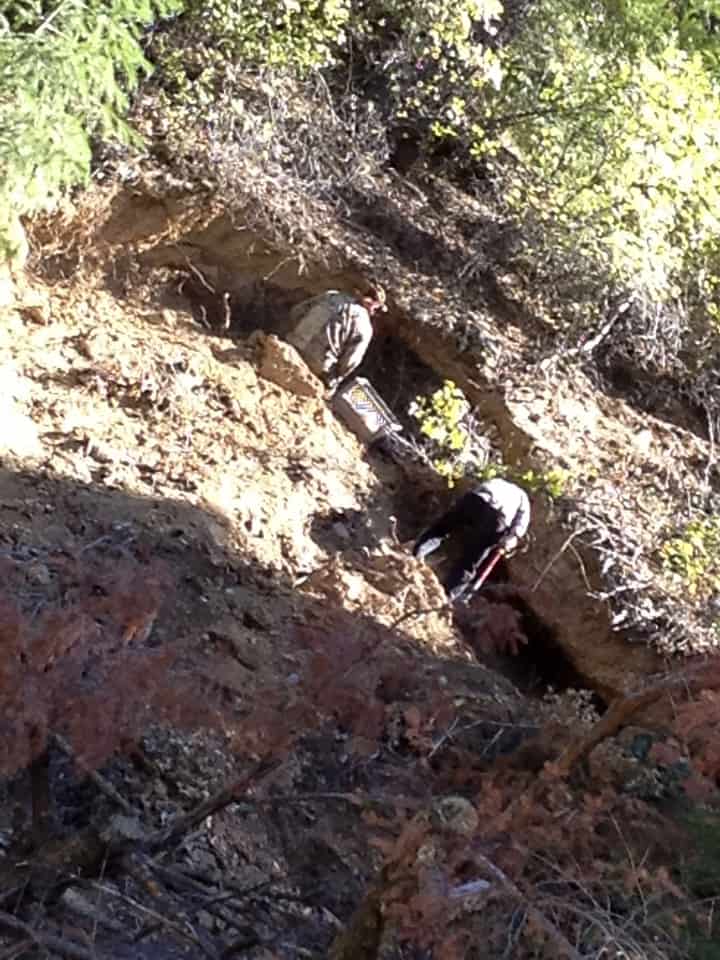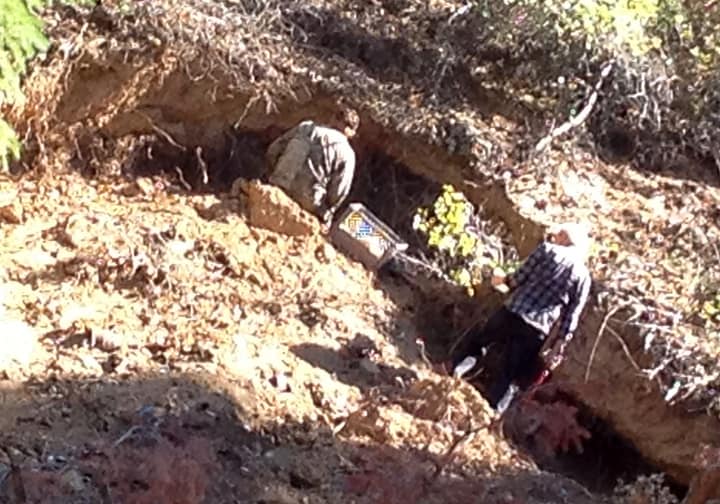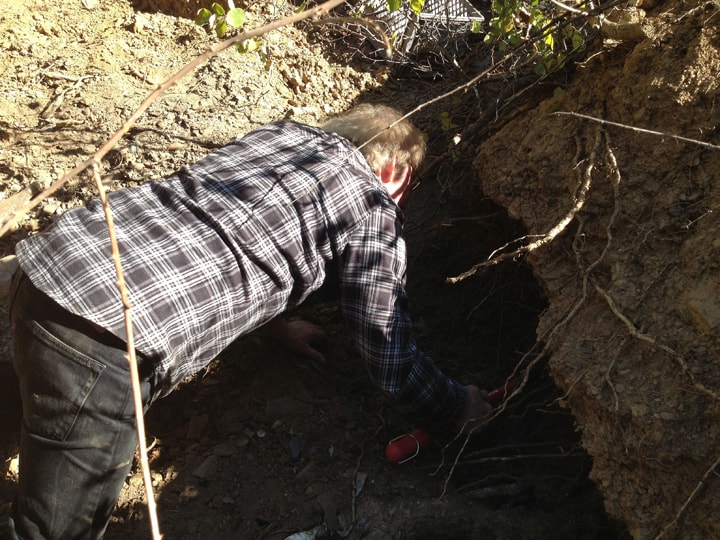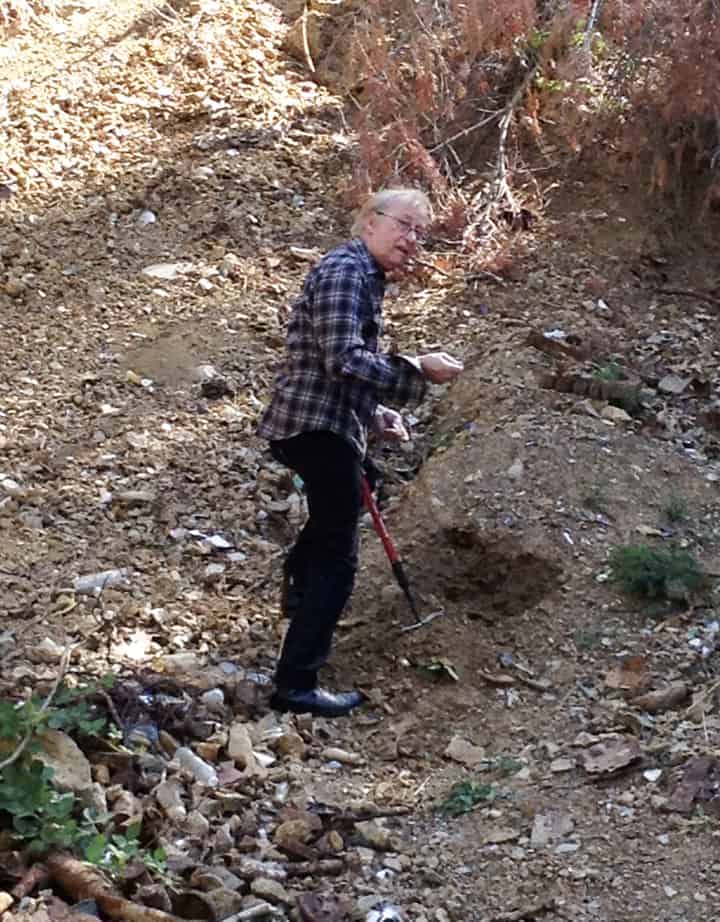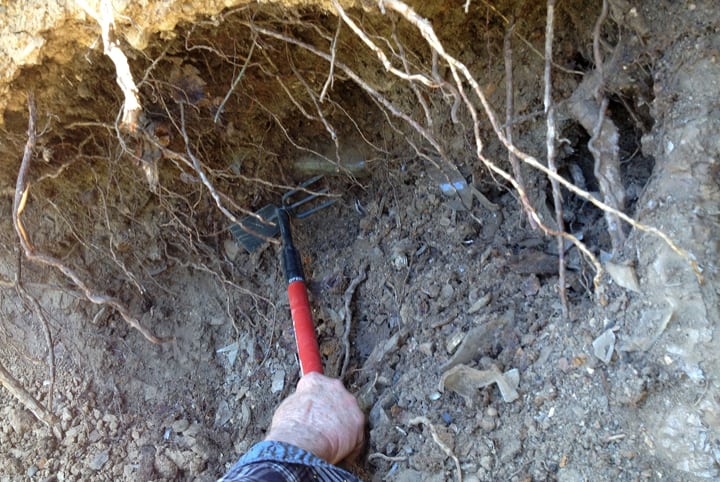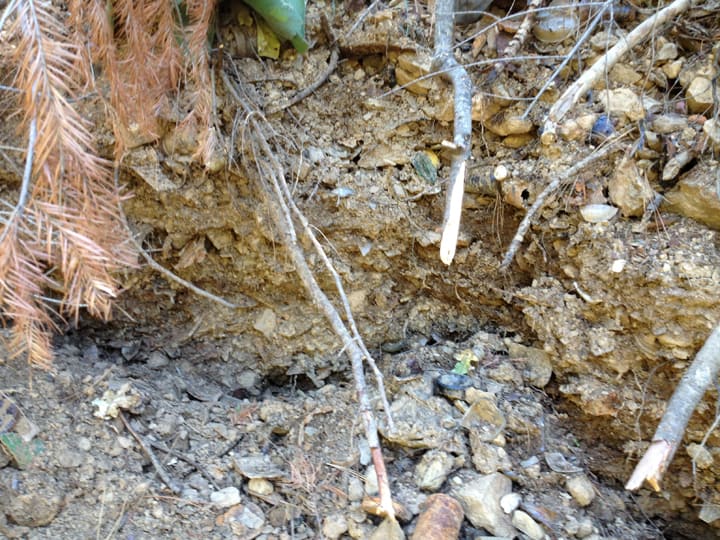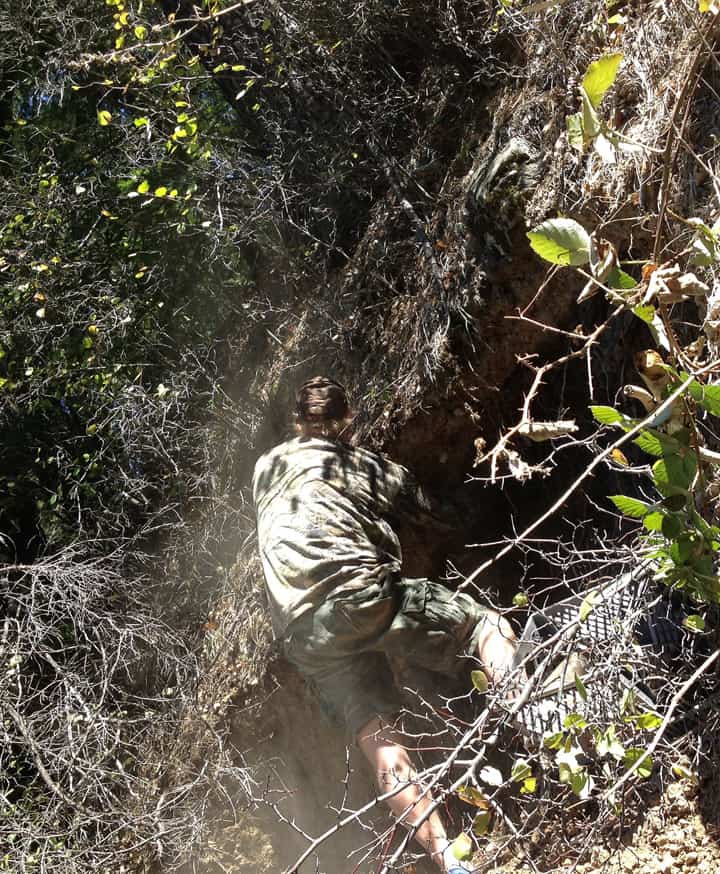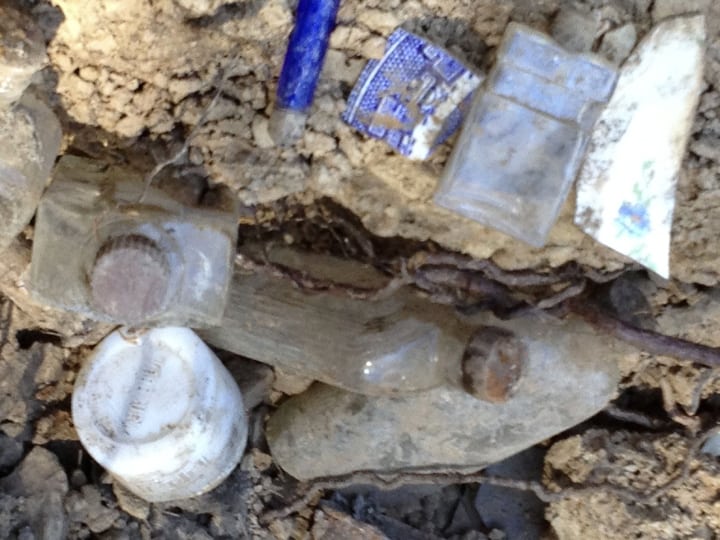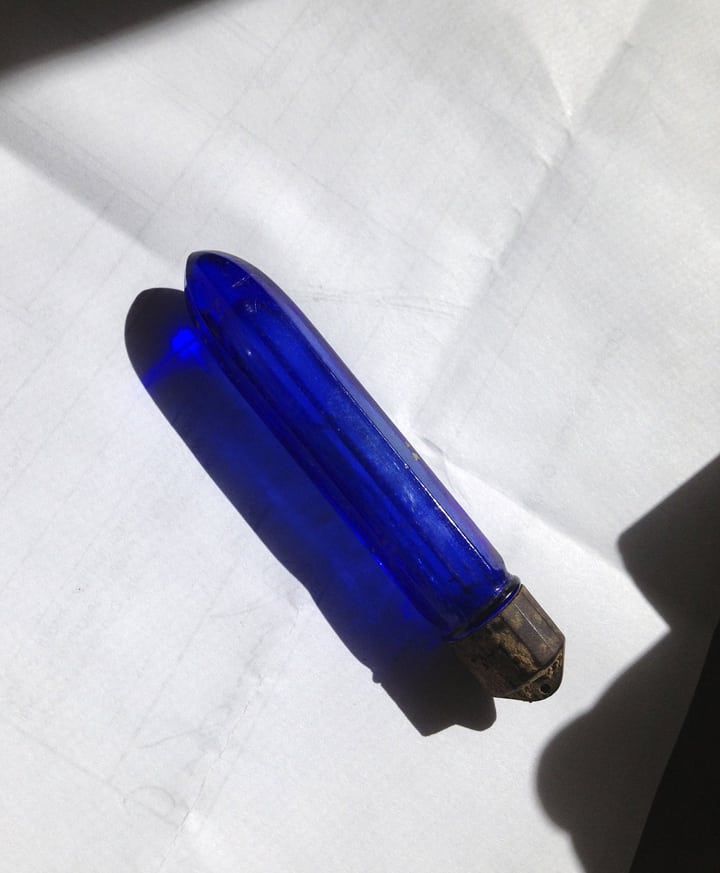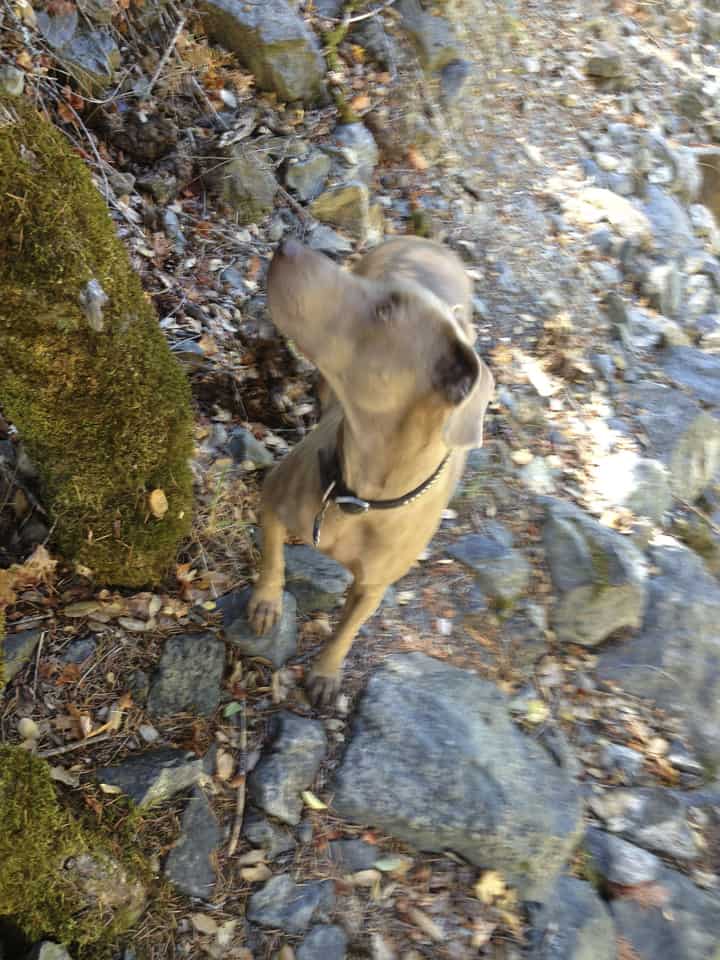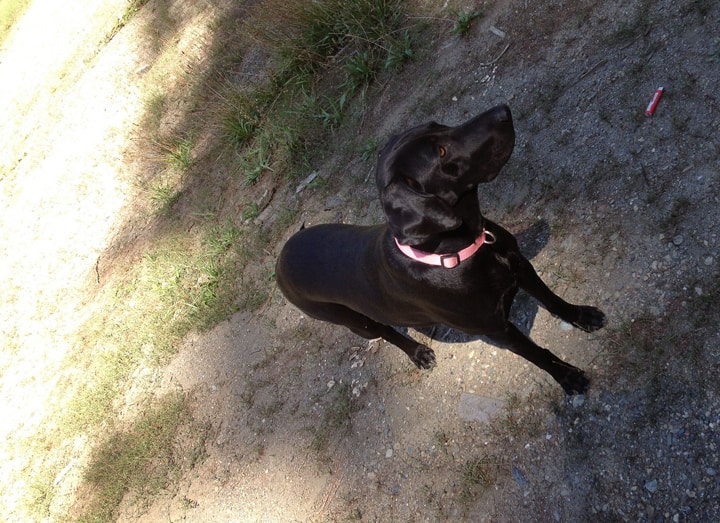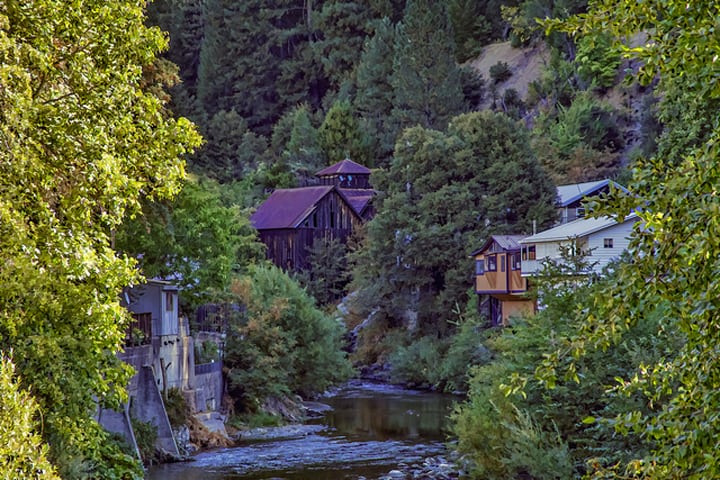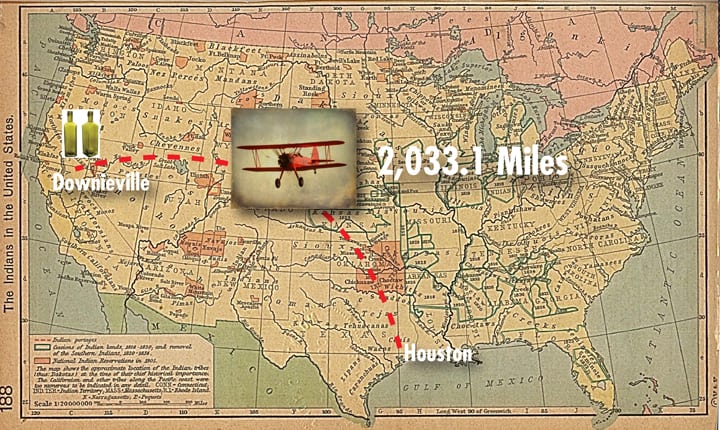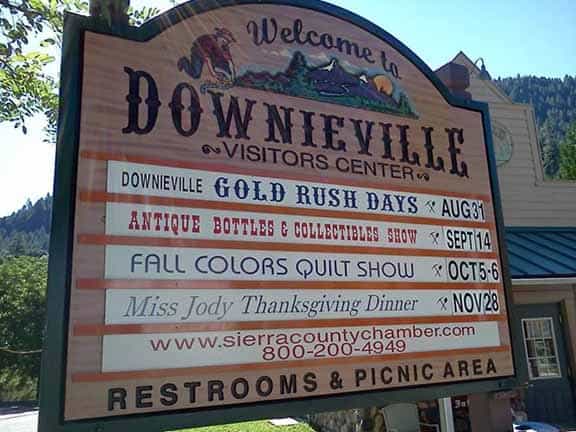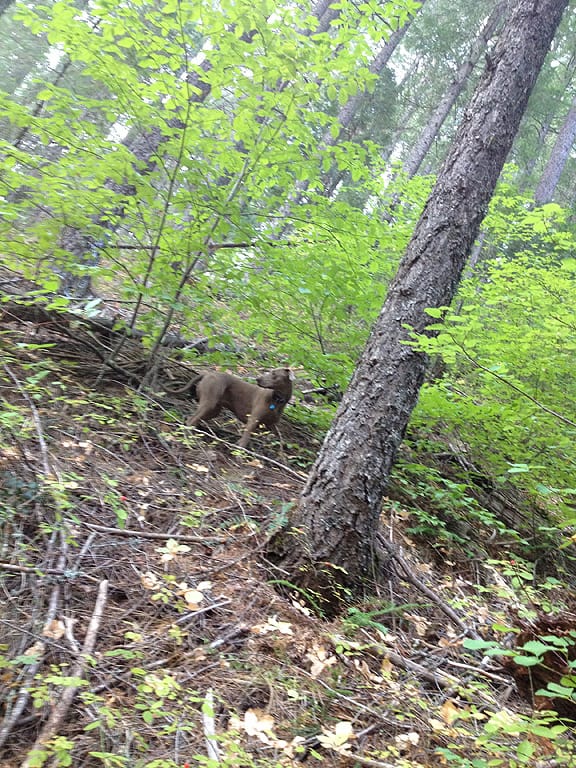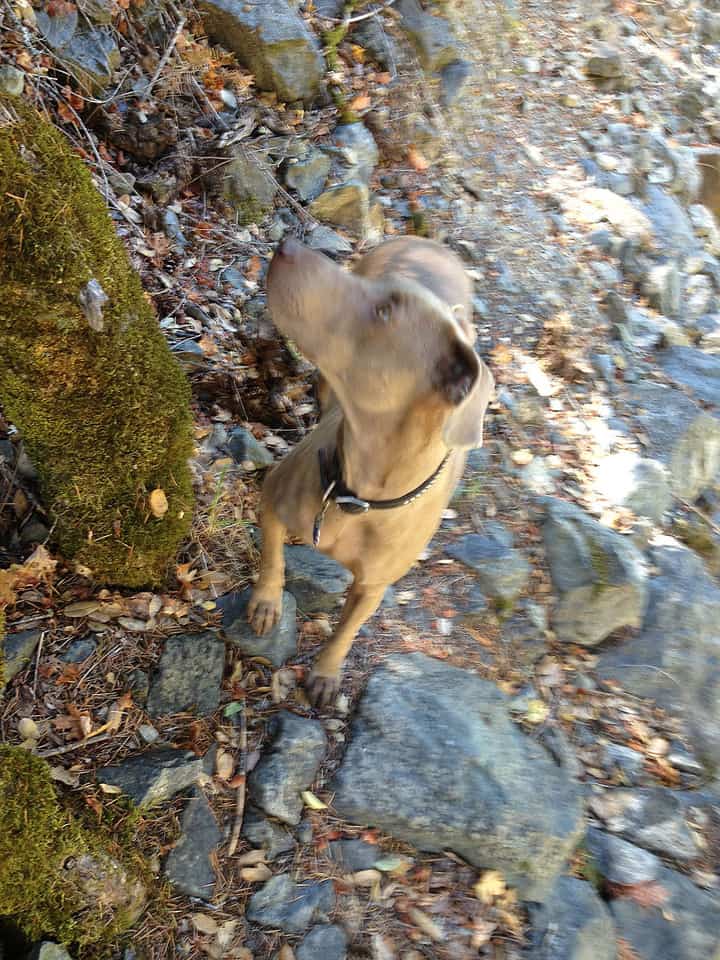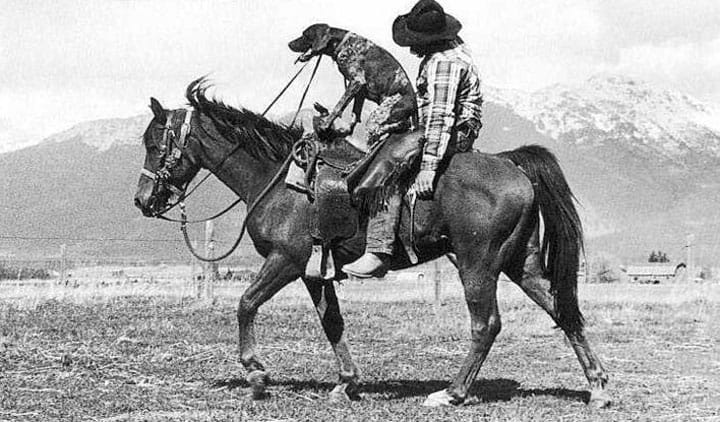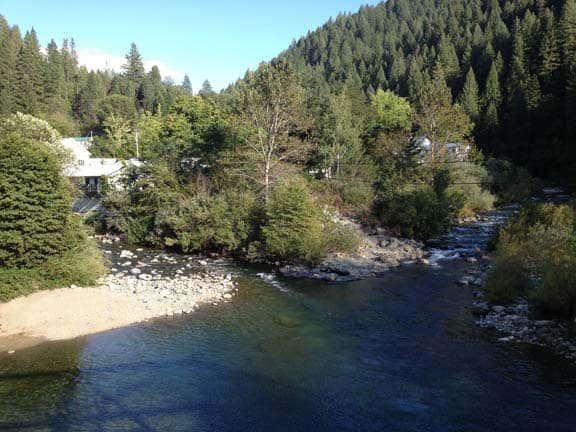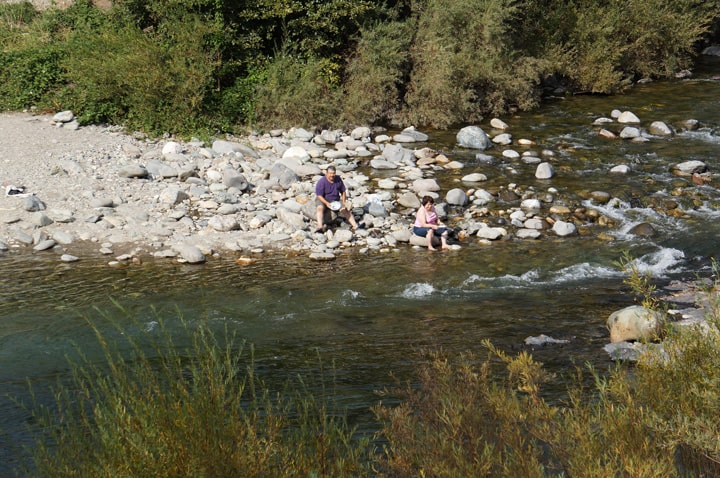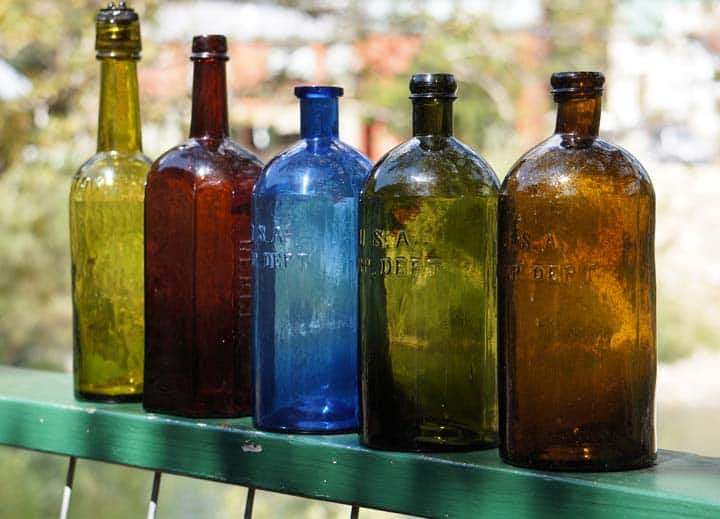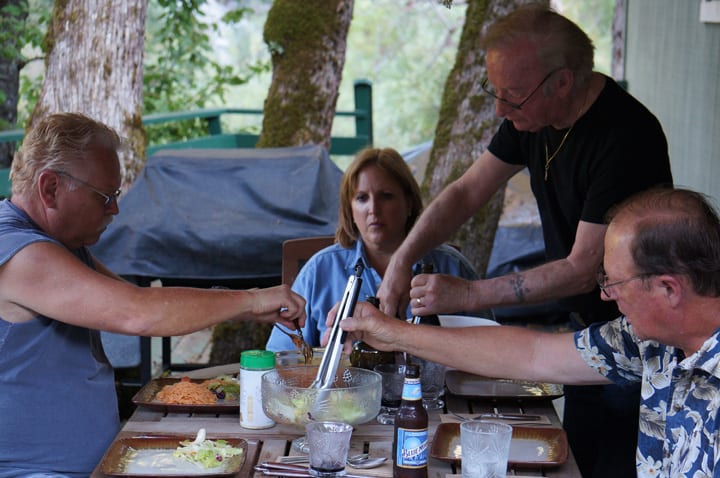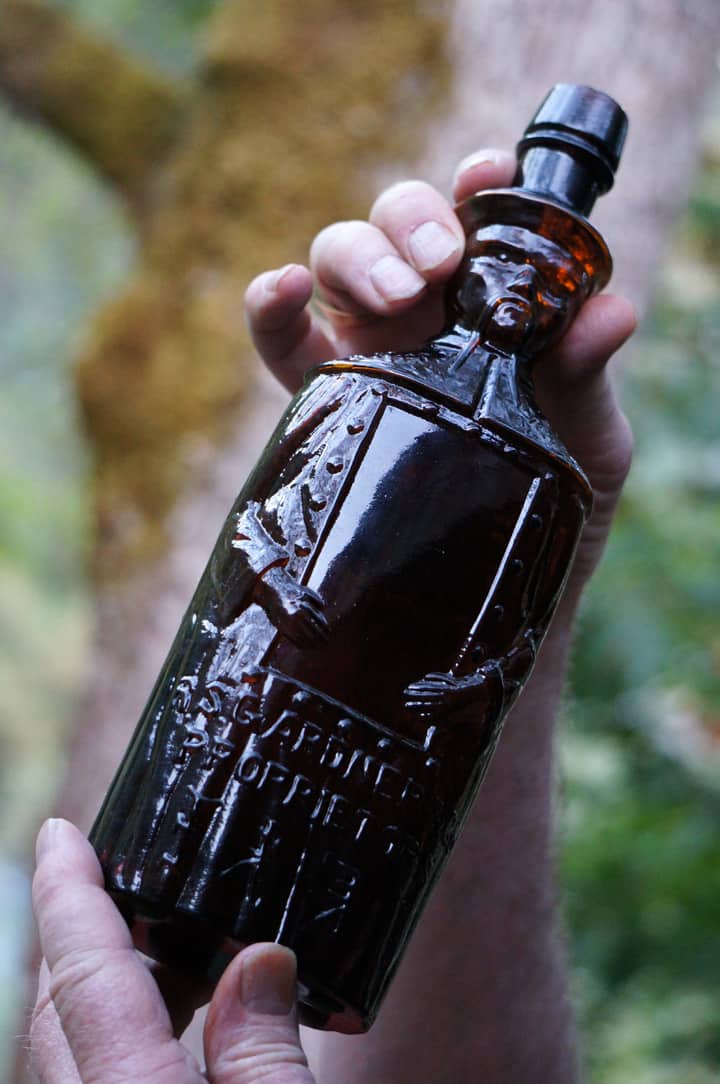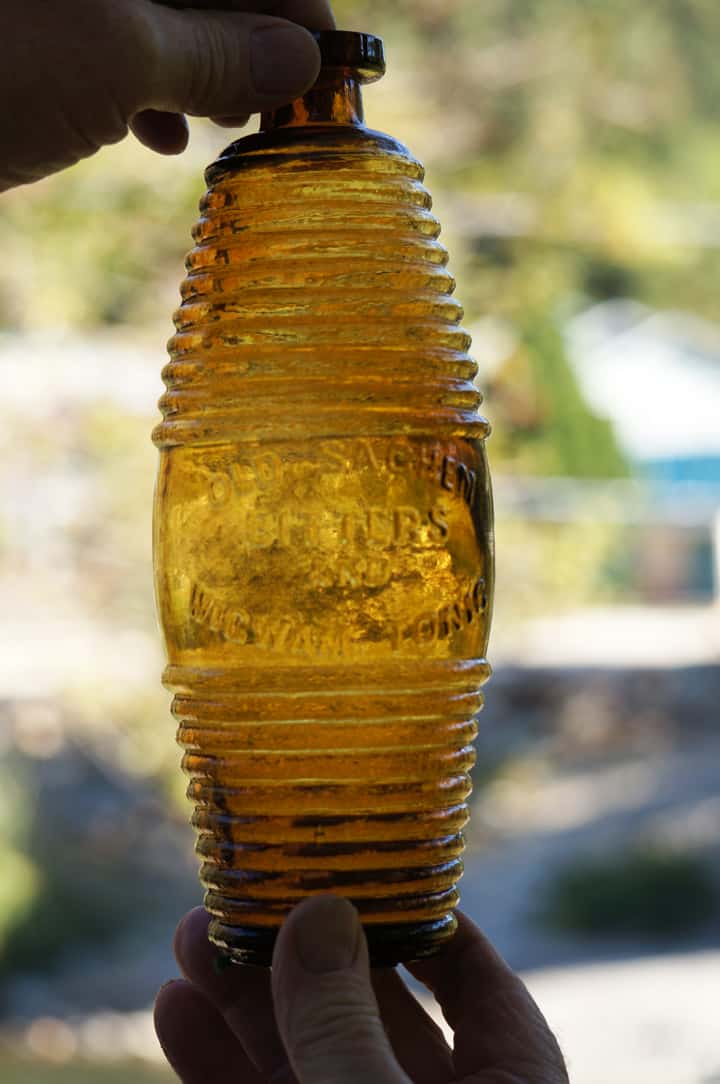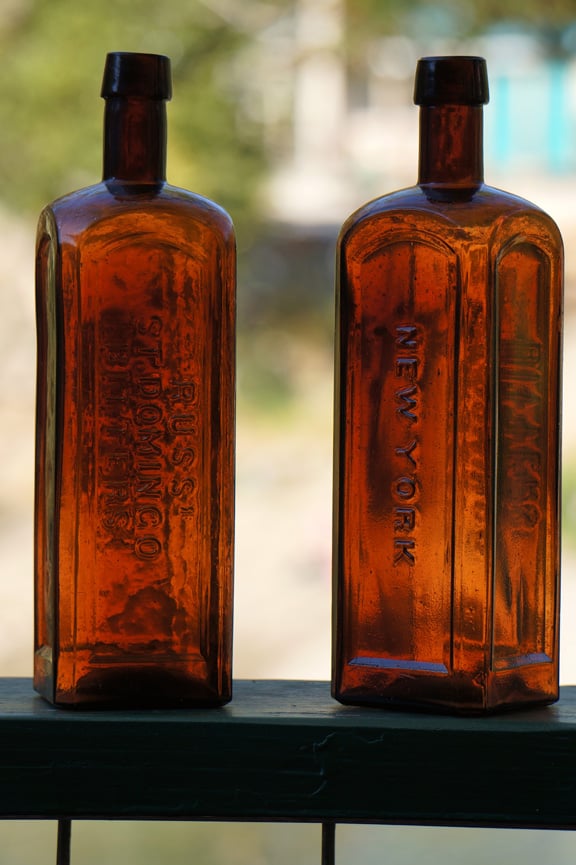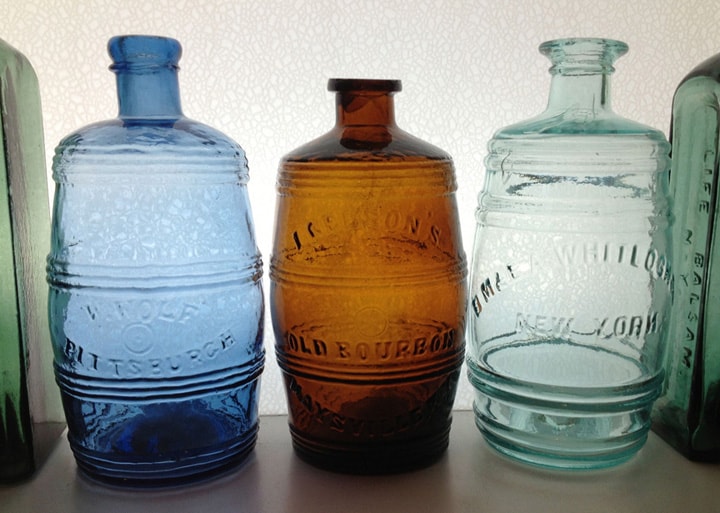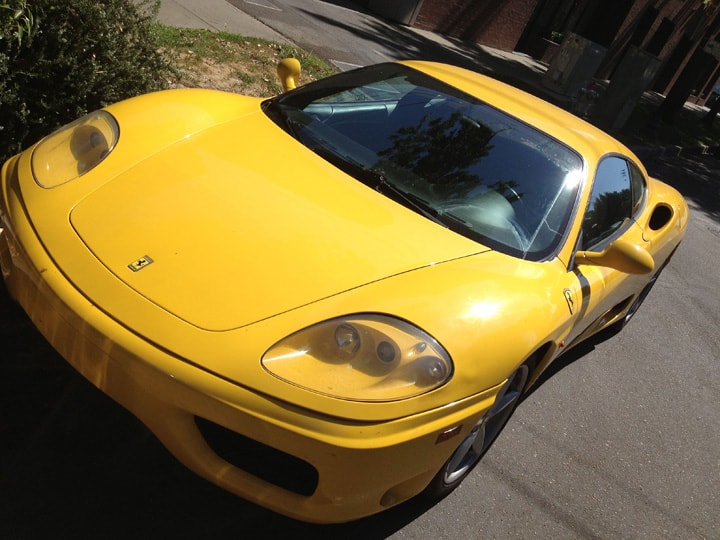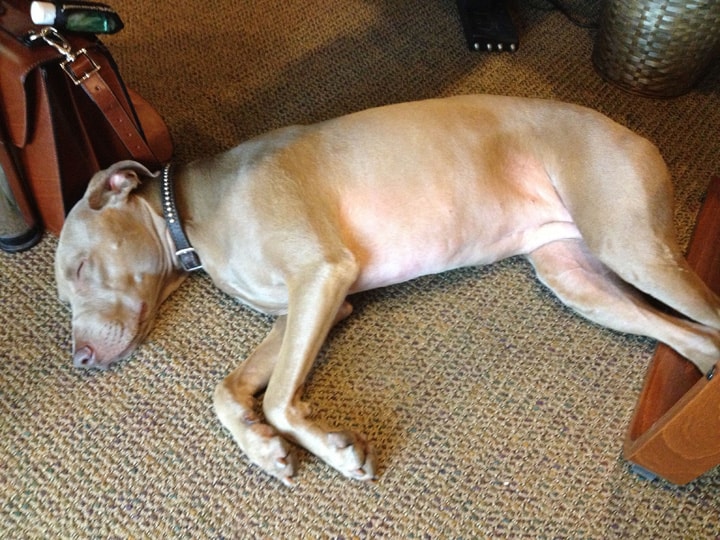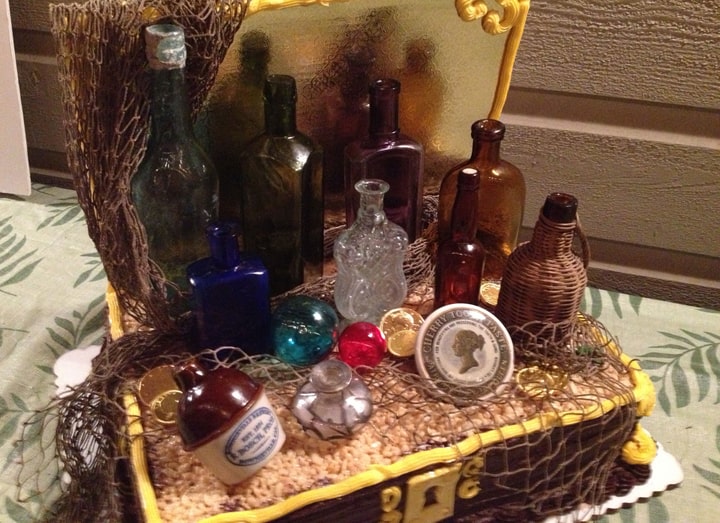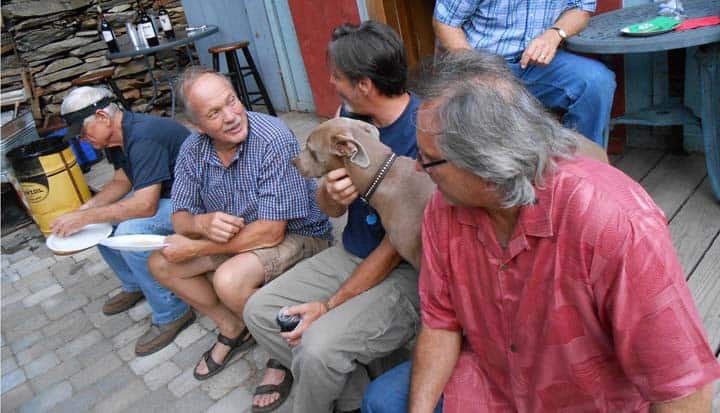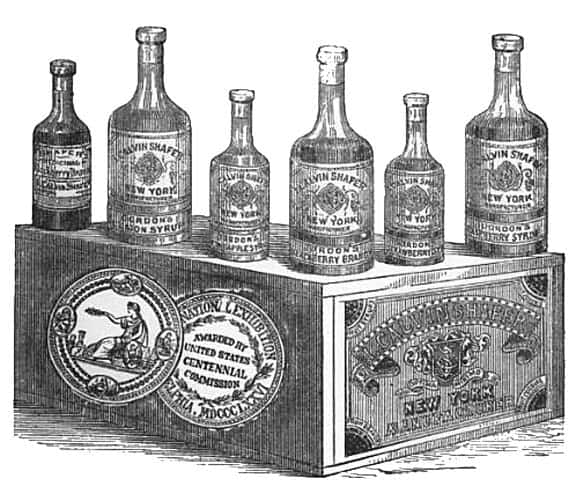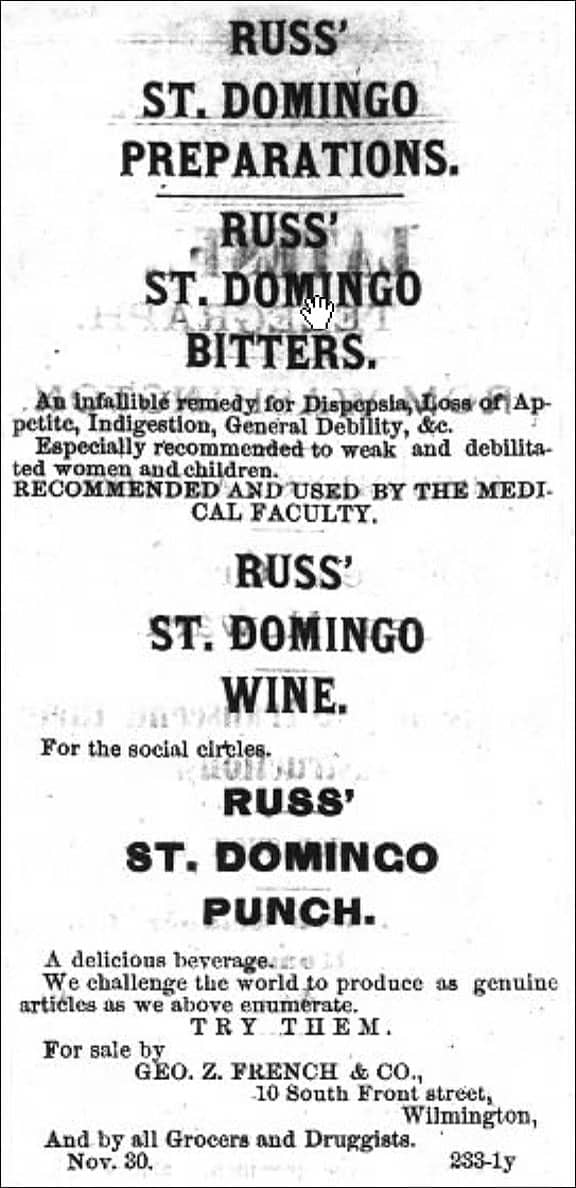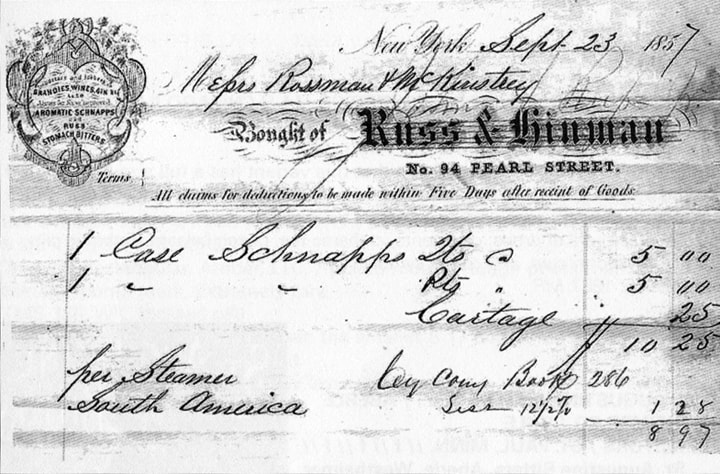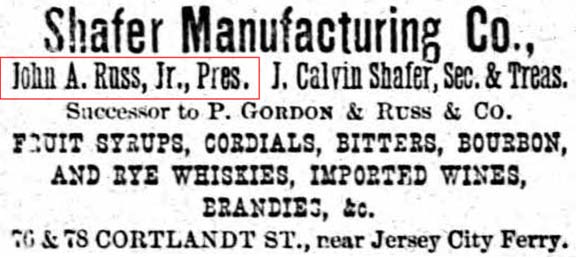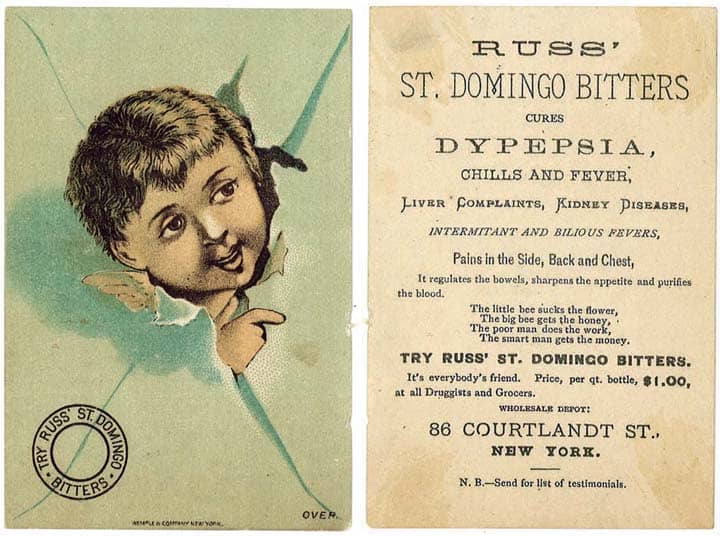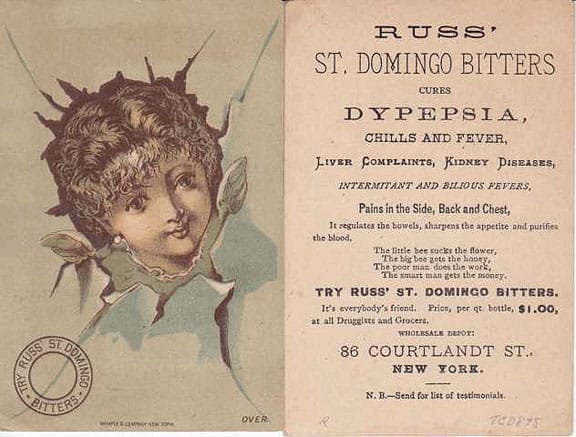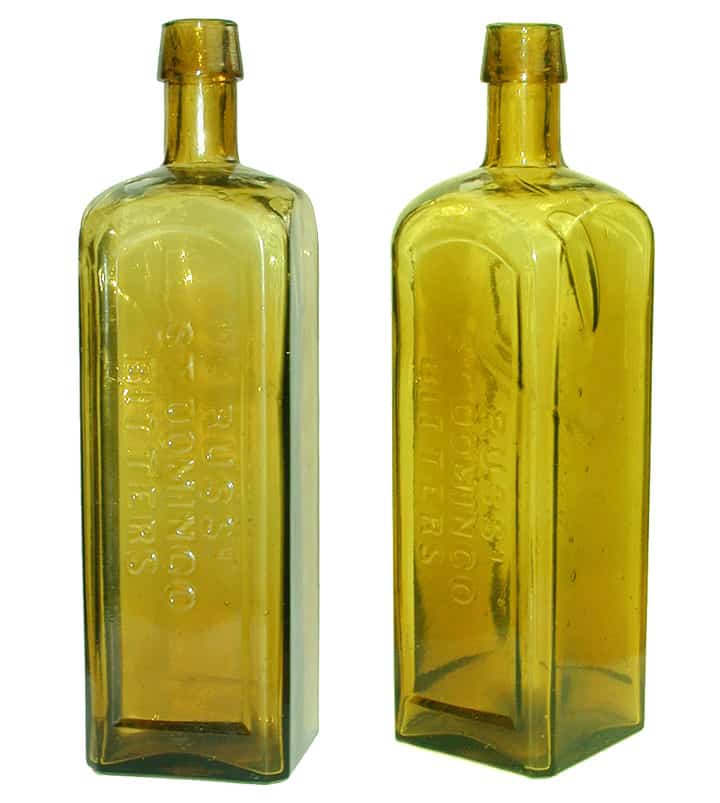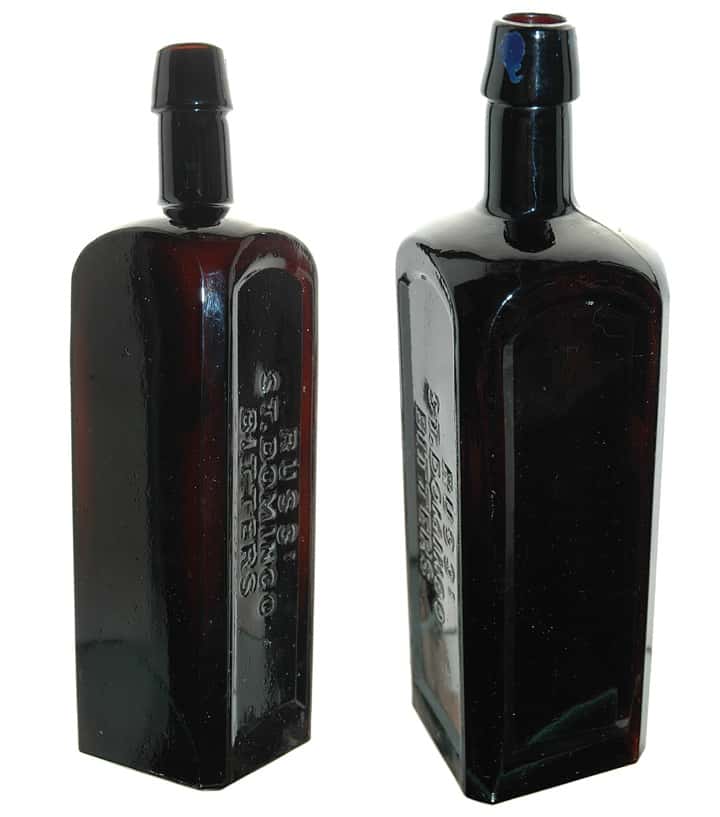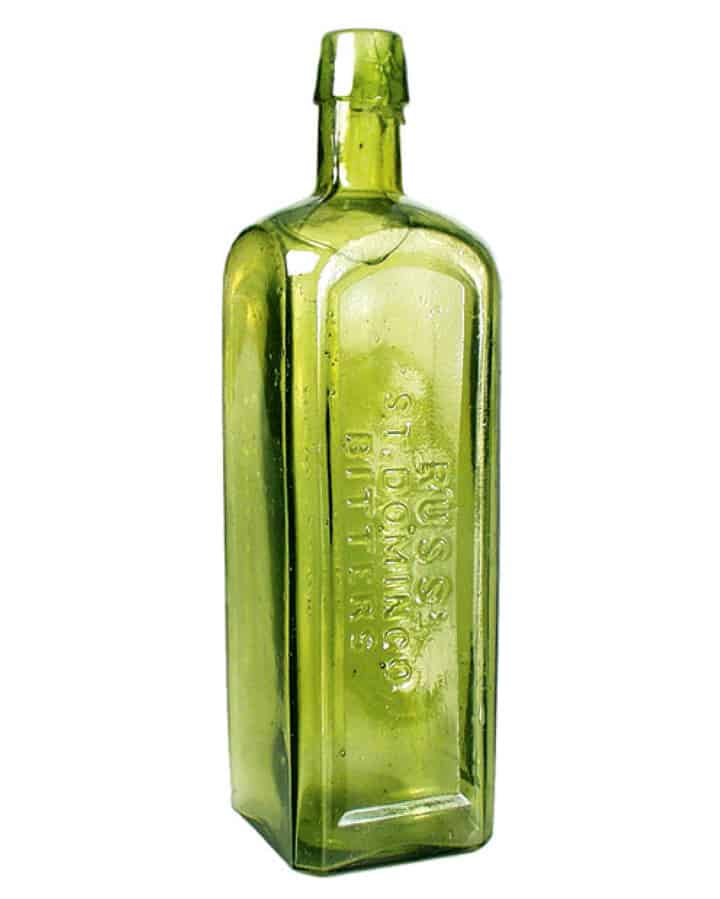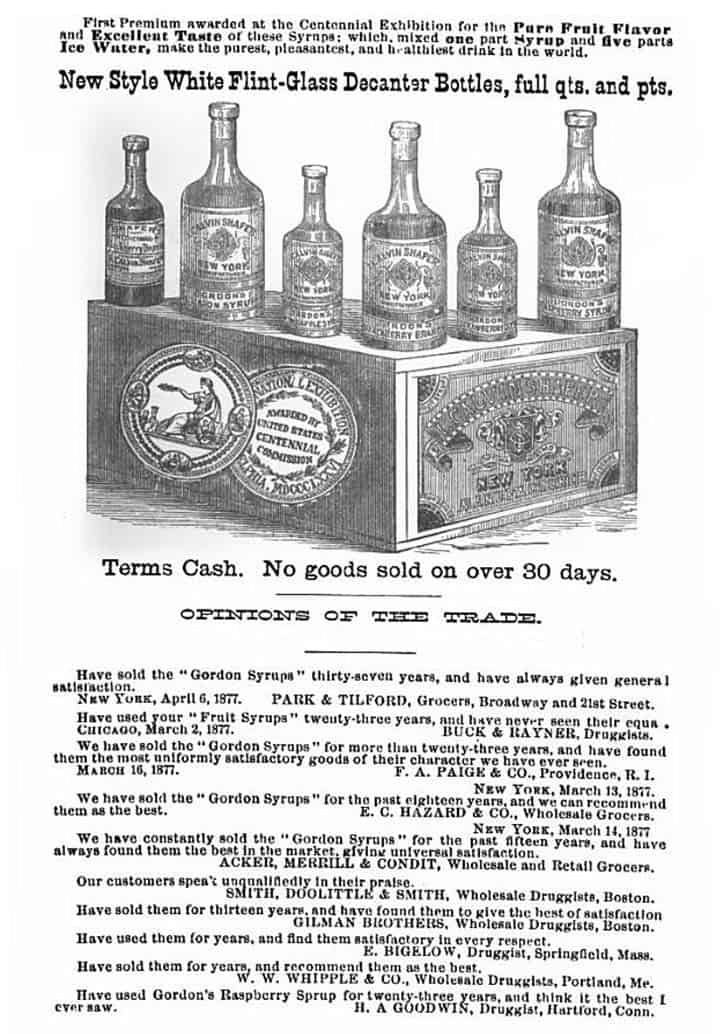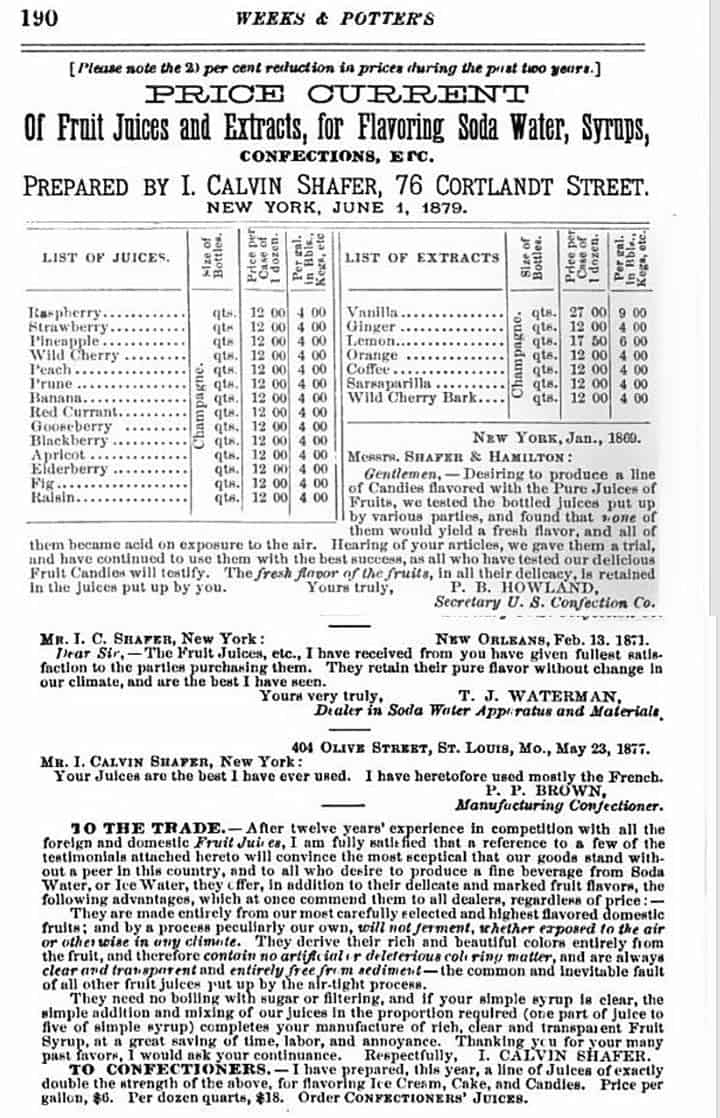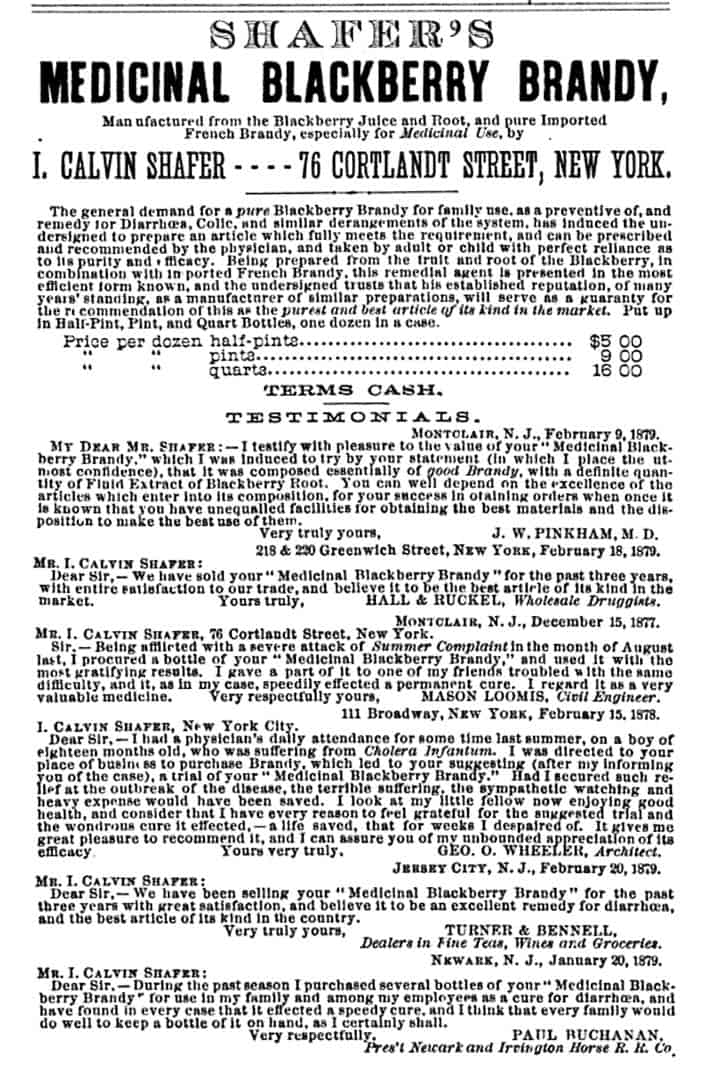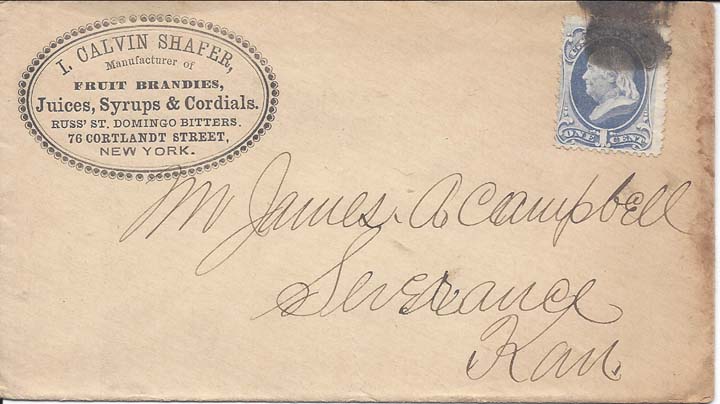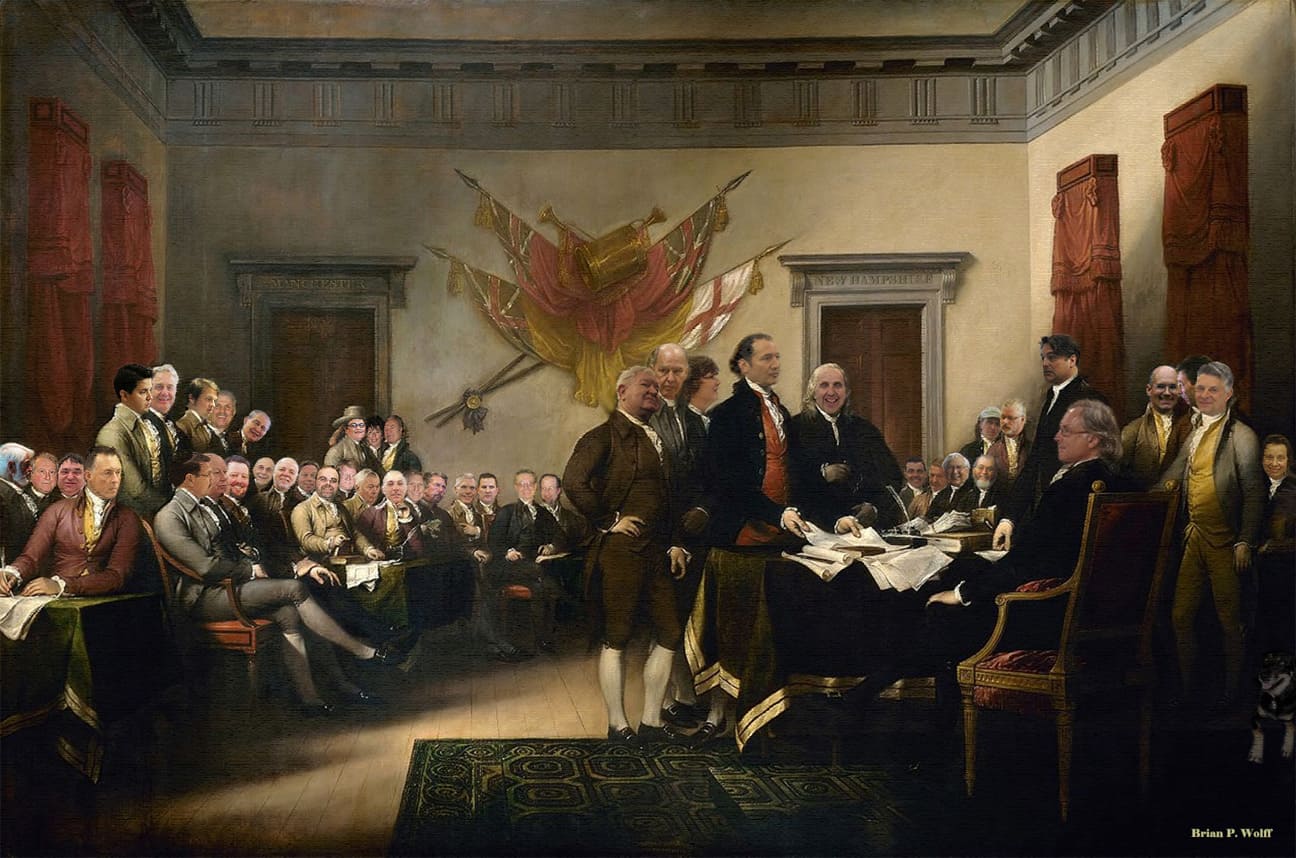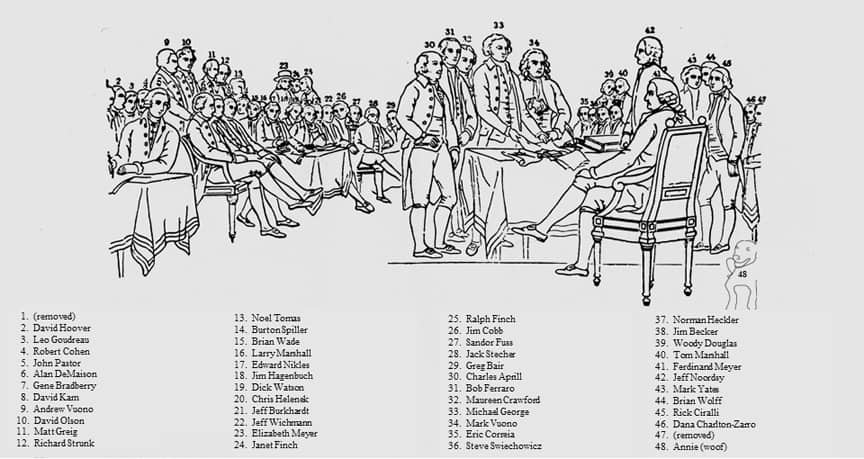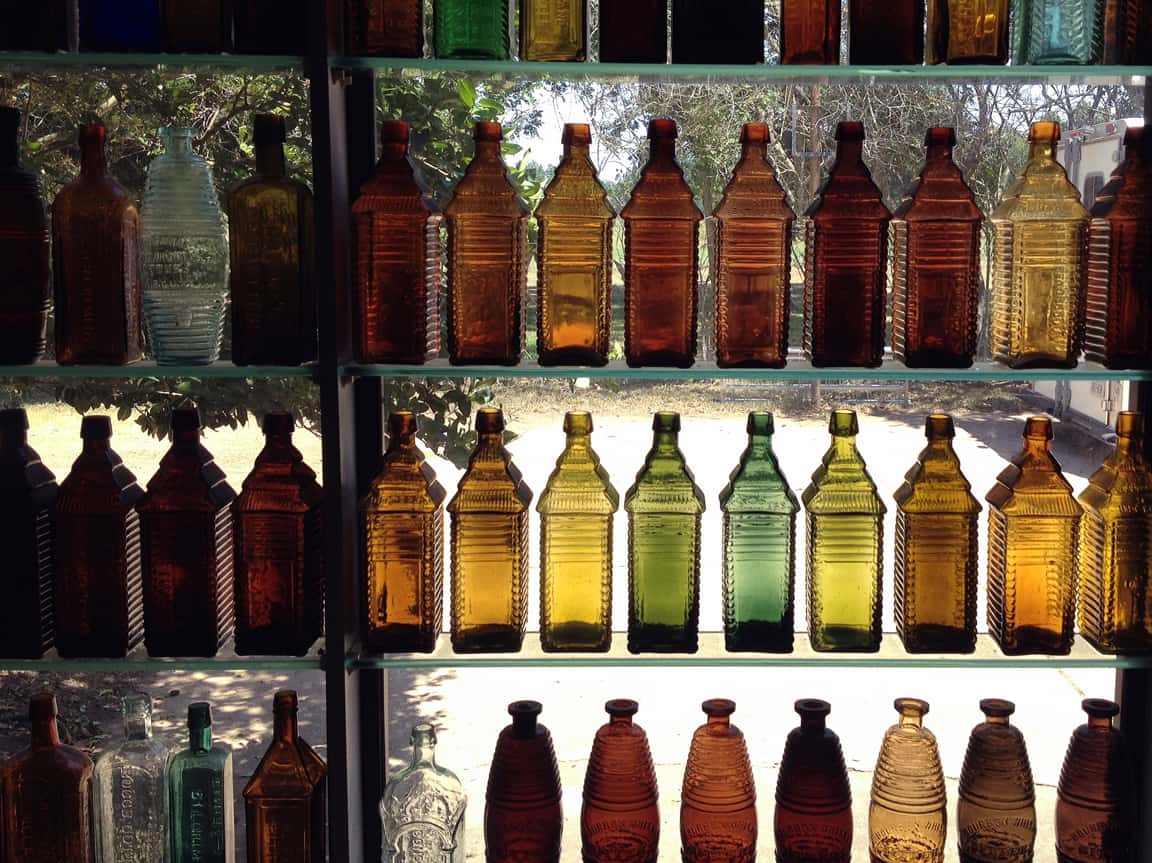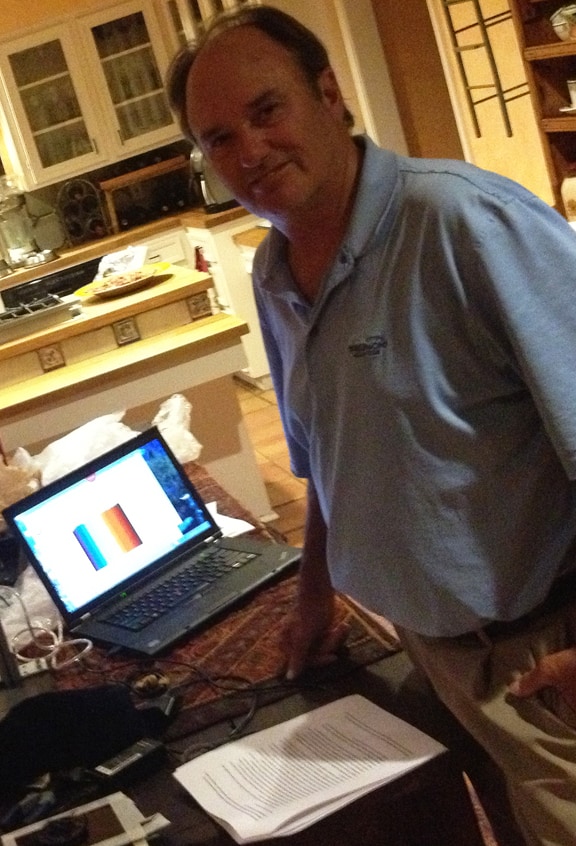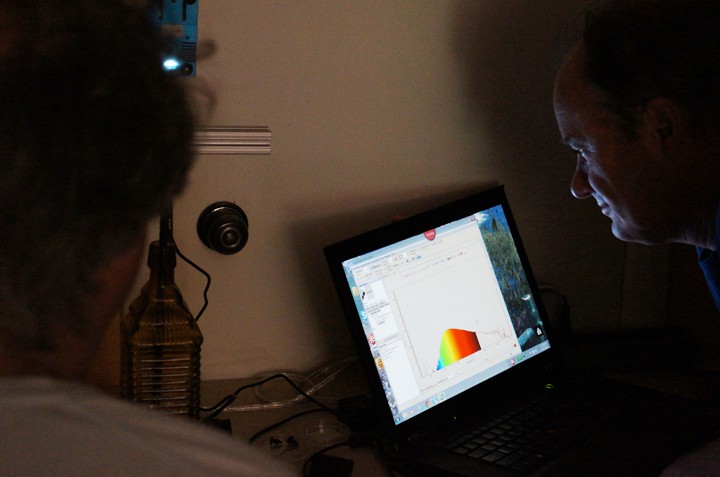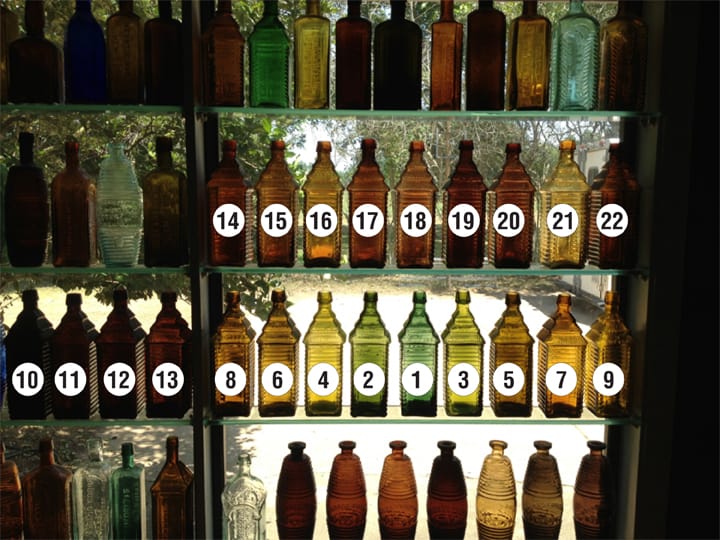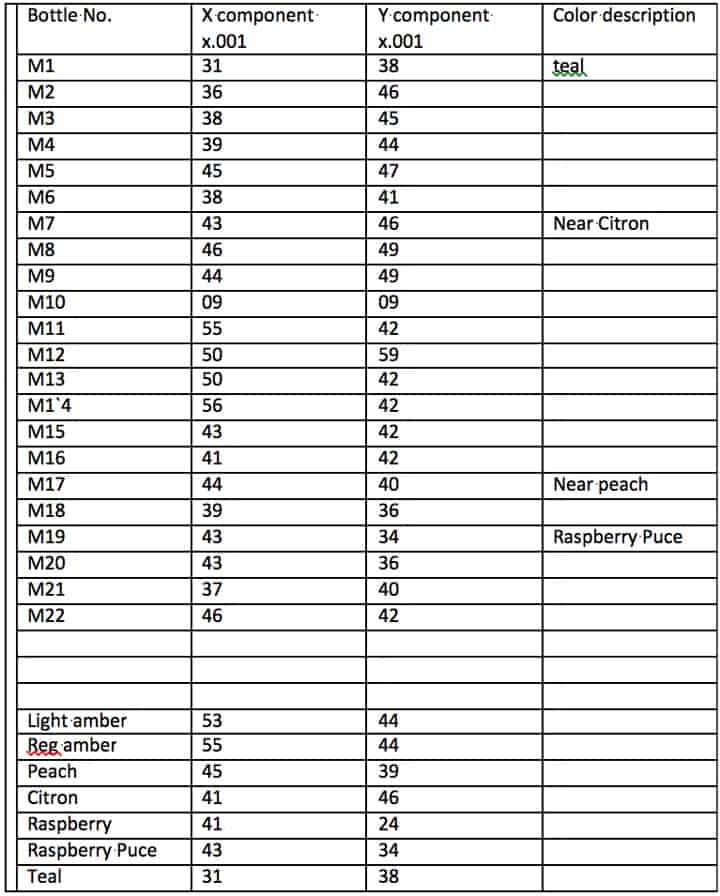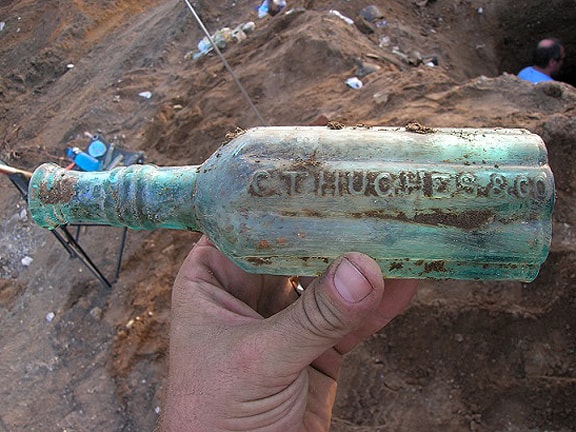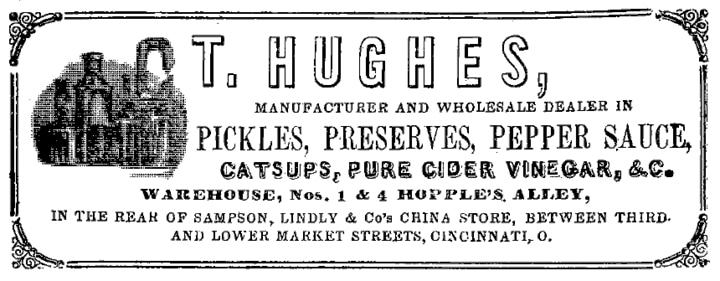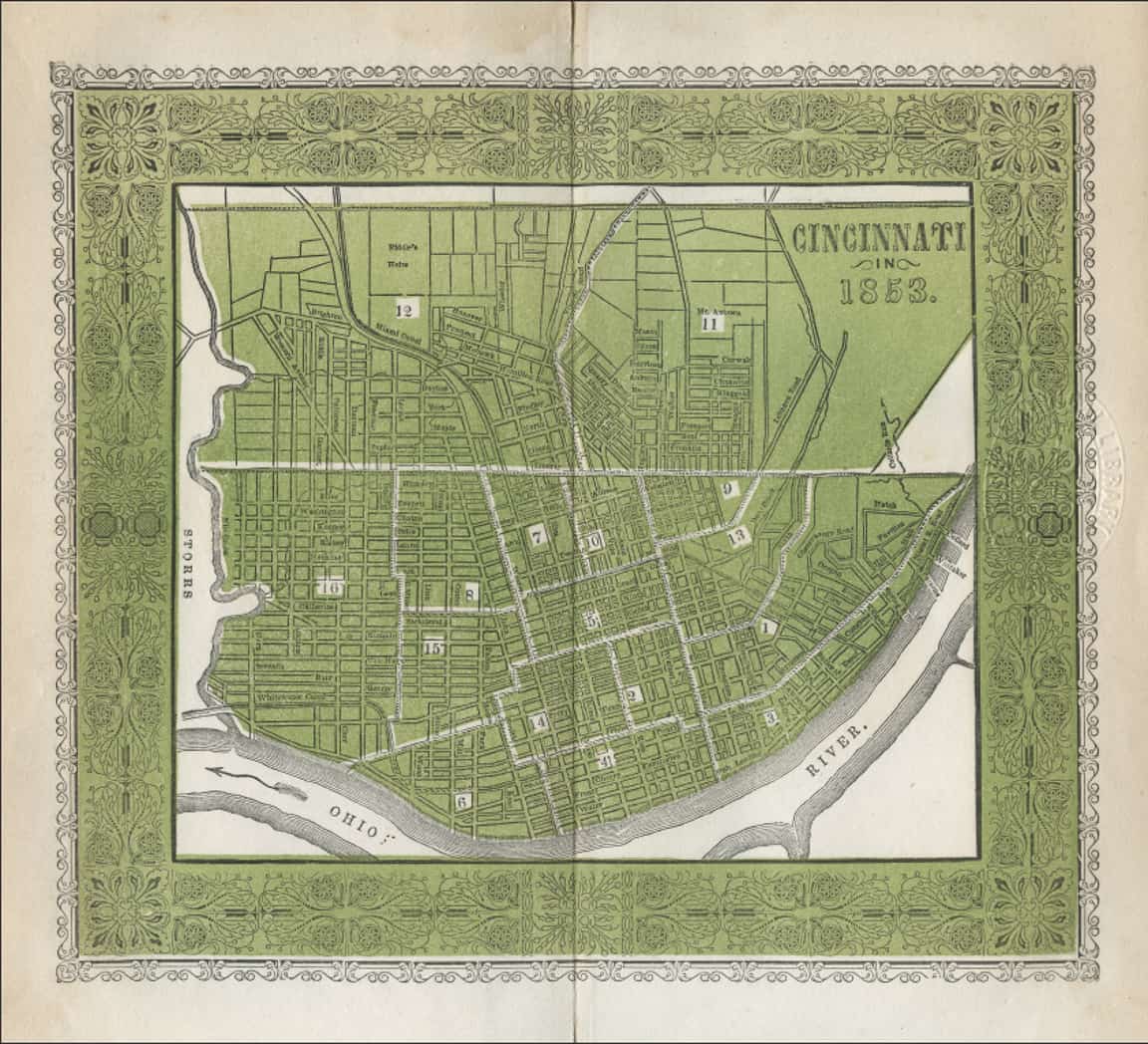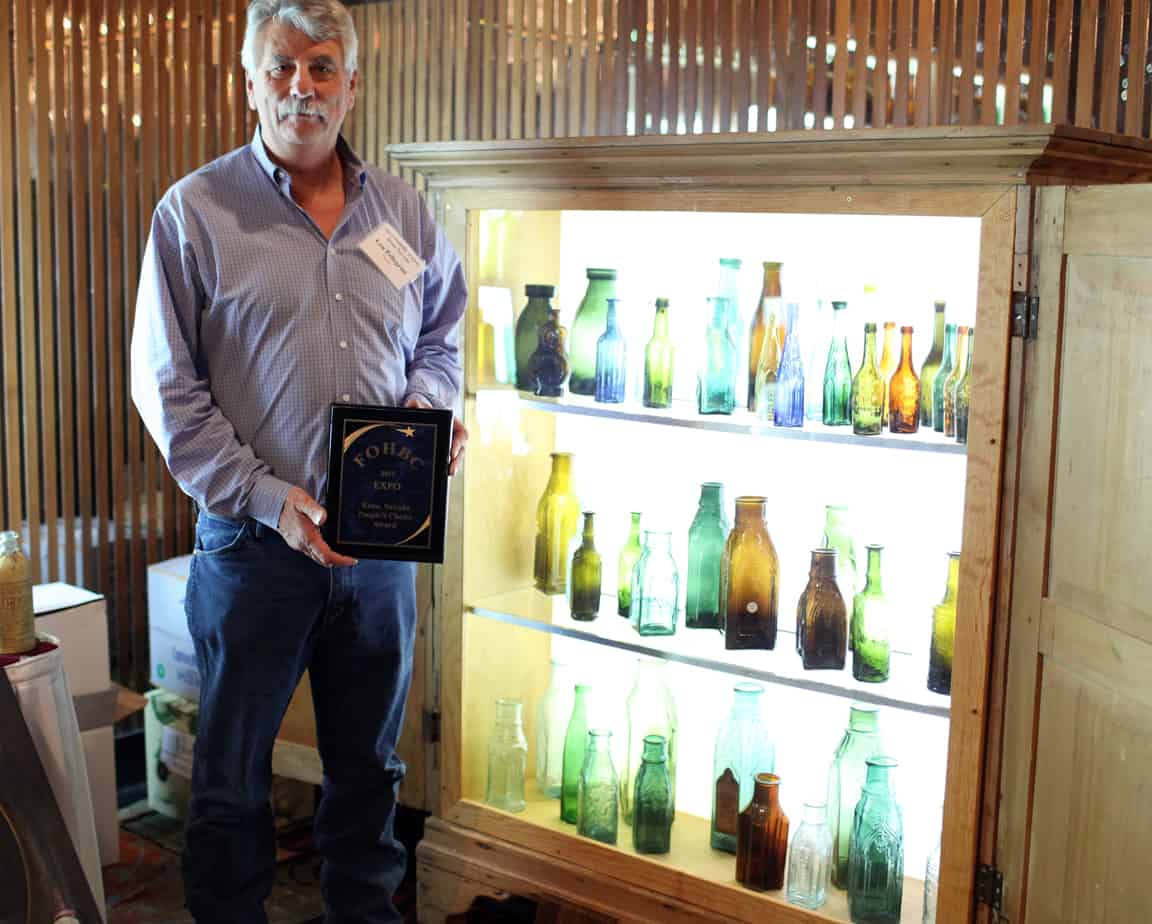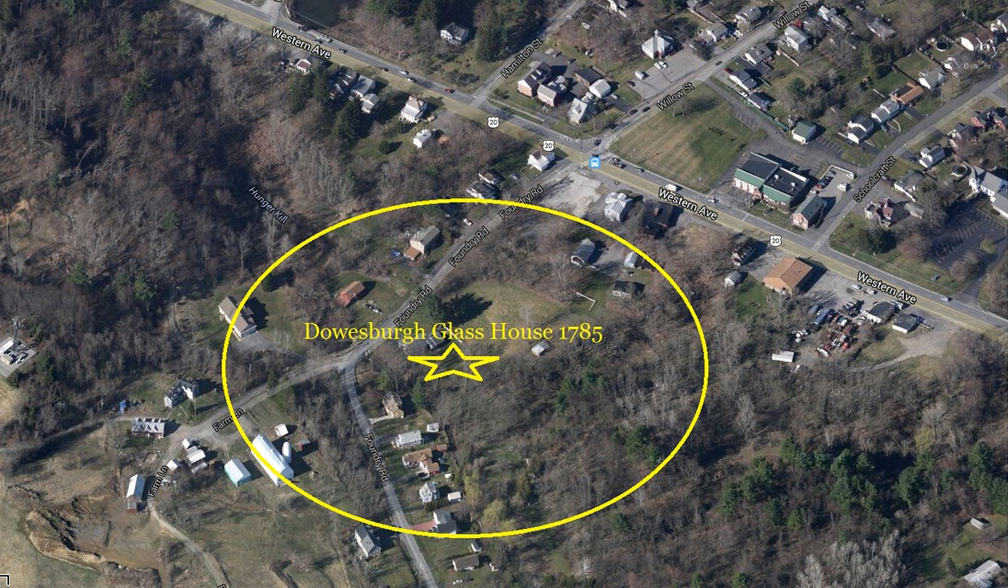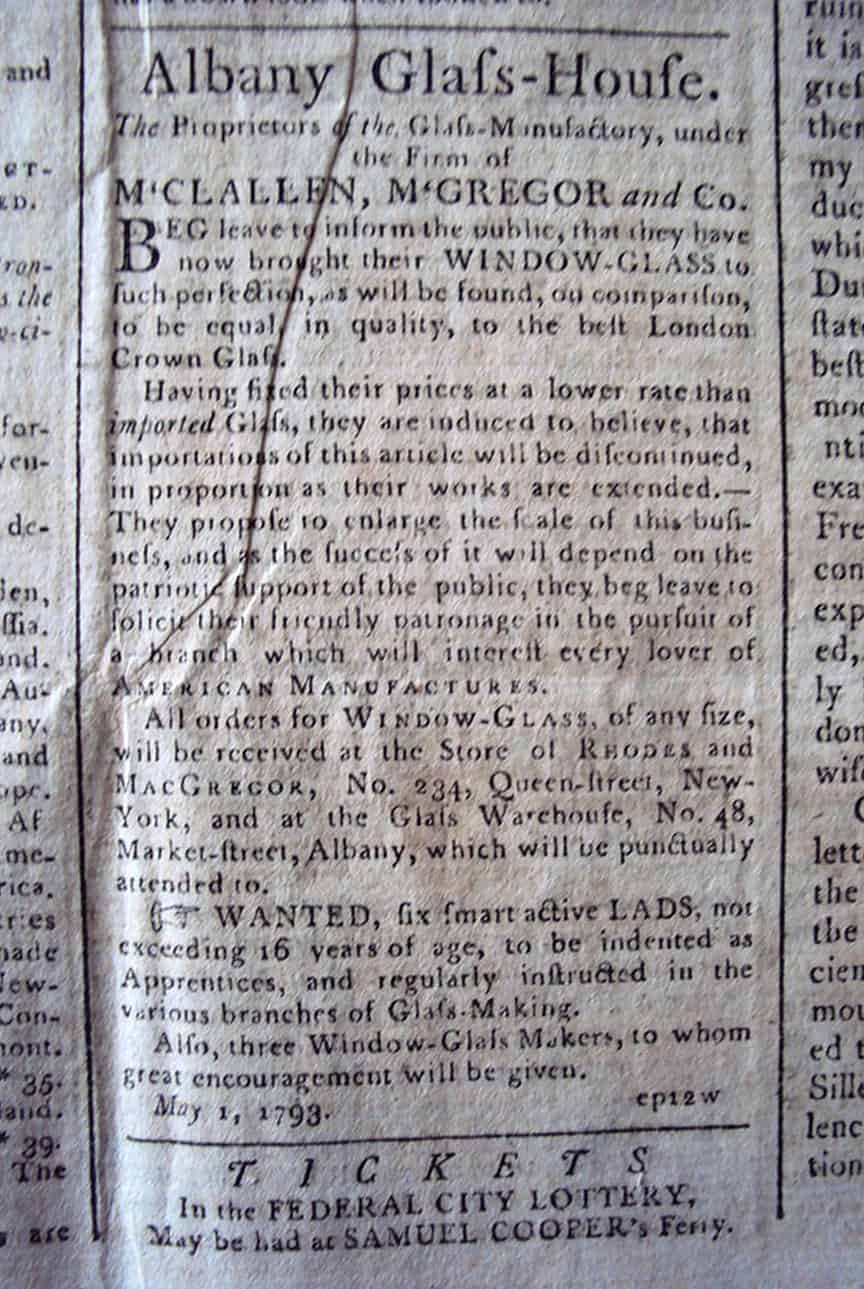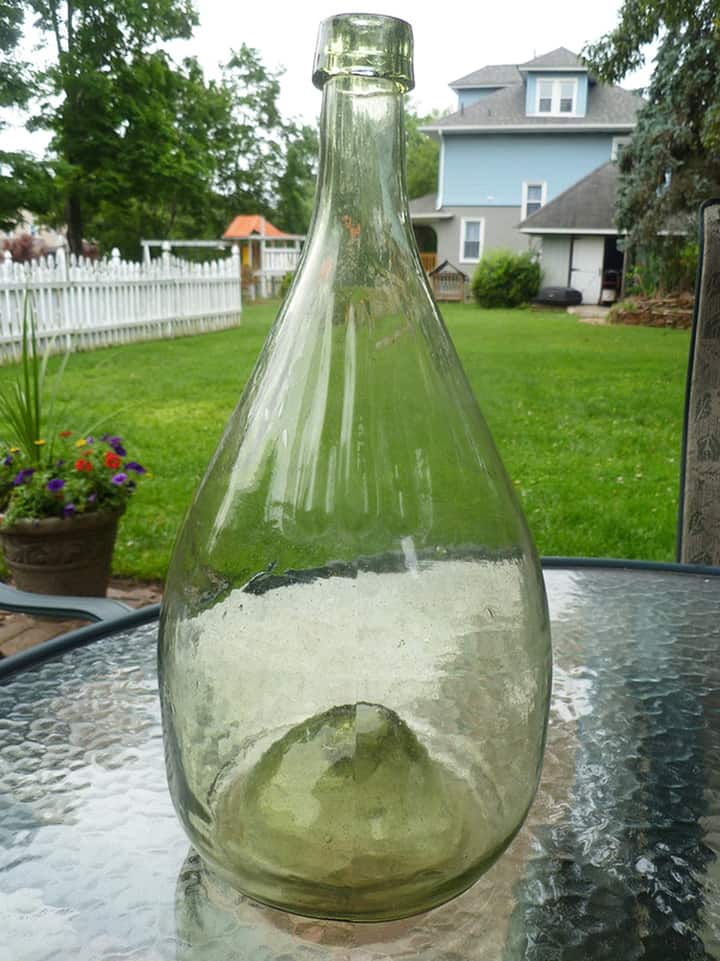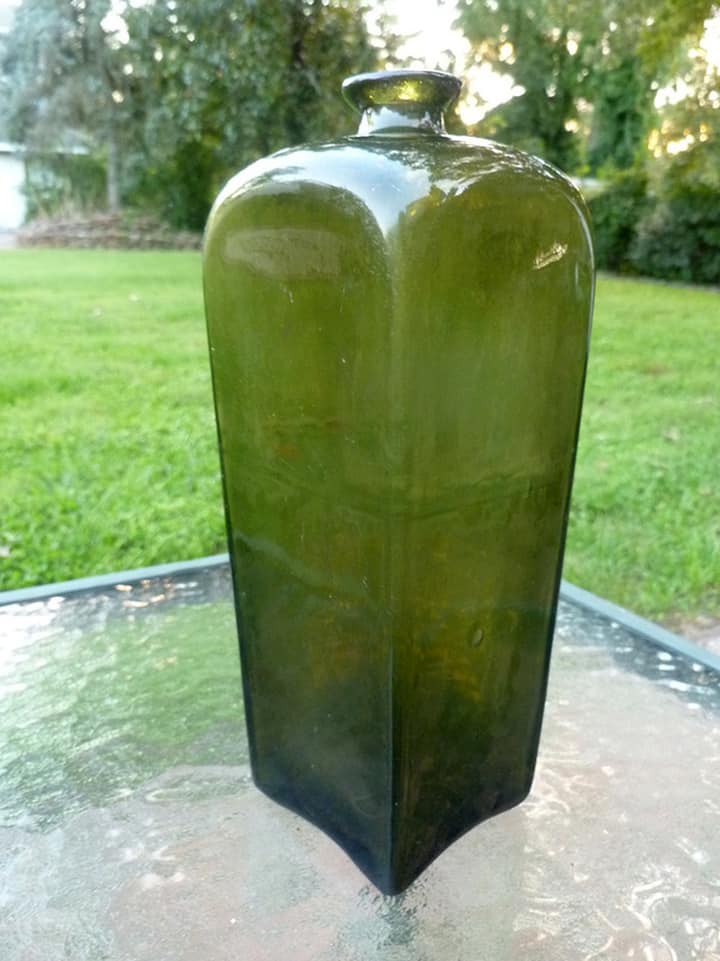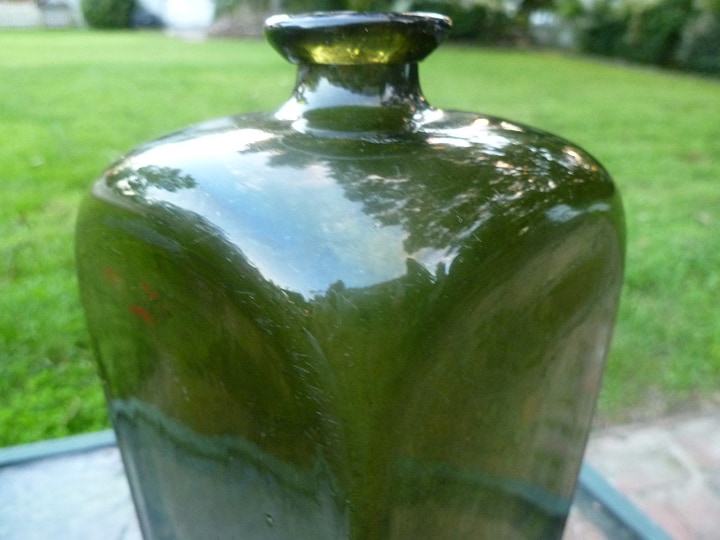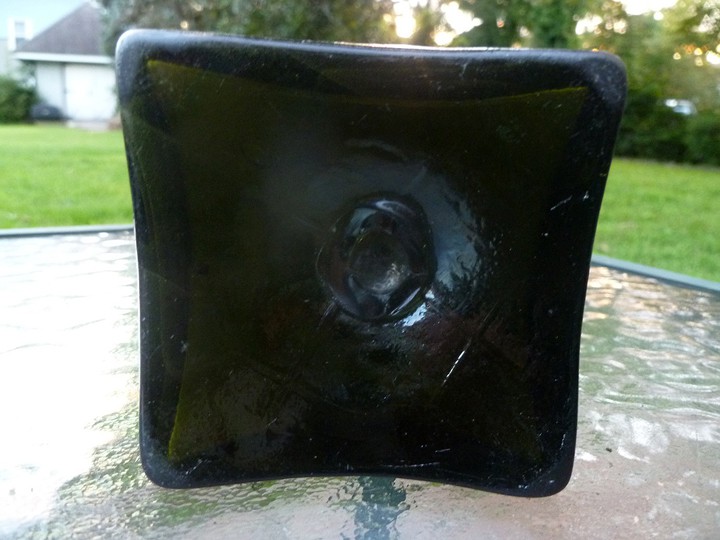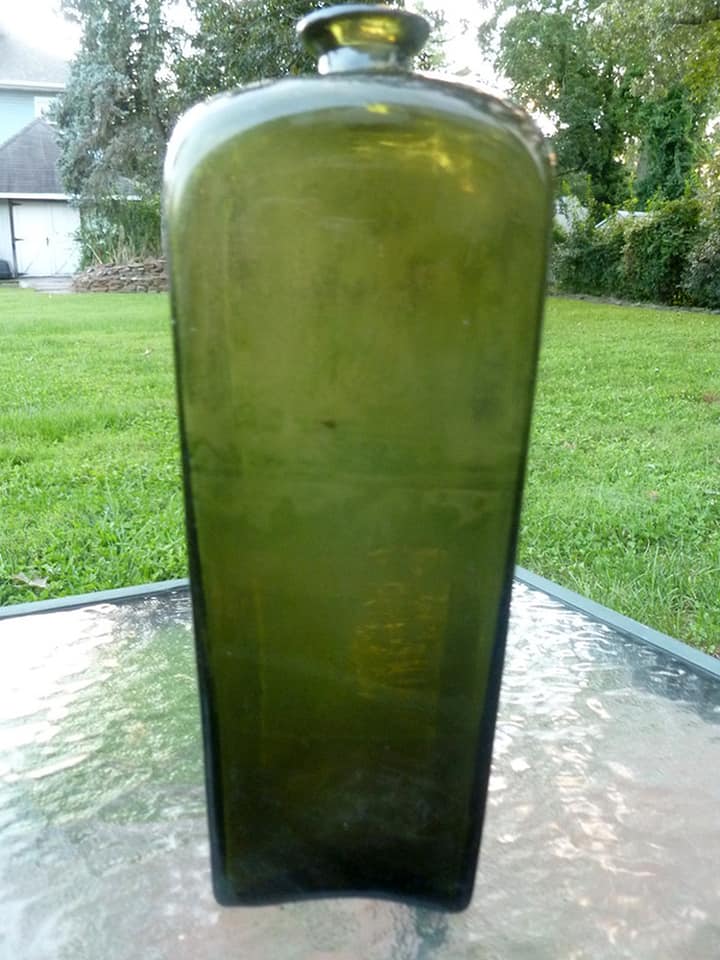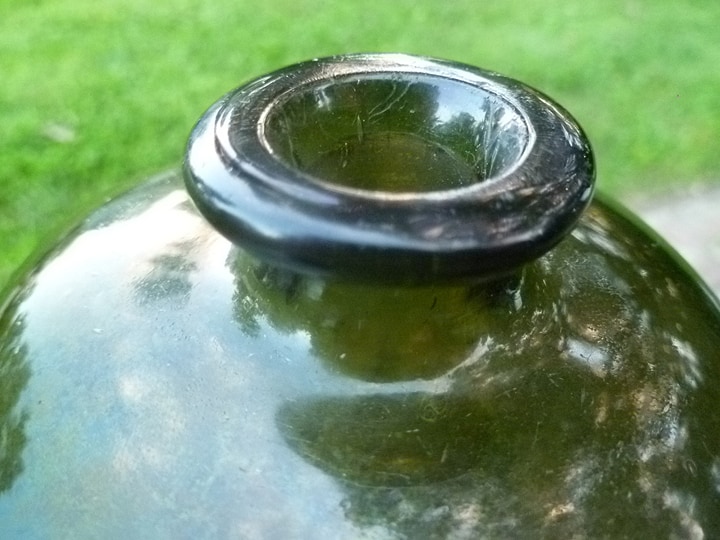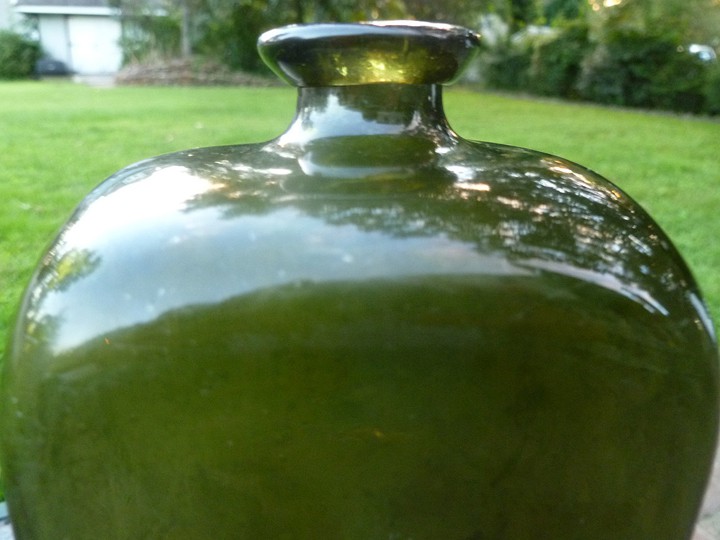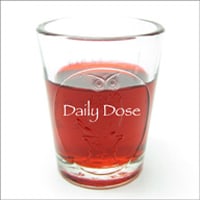What about this New Orleans Malakoff Bitters?
Malakoff Russian Stomach Bitters
21 September 2013 (updated 22 Sept 2013) (updated 25 September 2013) (R•060614) (R•o72314) (R•022219) (R•030419)
An ebony and aged Ganymede, however, appeared with coffee, and told me “the Captn wants ask weder you take some bitters, Sar;” and, indeed, “the Captain” did compound some amazing preparation for the judges and colonel present on deck and below that met the approval of them all, and was recommending it for its fortifying qualities in making a Redan and Malakoff of the stomach.
AFFAIRS AT FORT PICKENS.; Interesting Details of the Condition of Both Camps. Letter from Mr. W.H. Russell, Special Correspondent of the London Times., MOBILE, Thursday, May 16, 1861.
![]() Yesterday I posted on Dr. Leon Hershberg’s Celebrated Russian Balsamic Bitters and even referenced the Russian Imperial Tonic Bitters in Friday’s Daily Dose. I guess it is a RED day as I am reminded of a rather outrageous trade card in my collection for a *Malakoff Russian Stomach Bitters. I hope I do not offend anyone. It is what it is. The illustration does get the point across though.
Yesterday I posted on Dr. Leon Hershberg’s Celebrated Russian Balsamic Bitters and even referenced the Russian Imperial Tonic Bitters in Friday’s Daily Dose. I guess it is a RED day as I am reminded of a rather outrageous trade card in my collection for a *Malakoff Russian Stomach Bitters. I hope I do not offend anyone. It is what it is. The illustration does get the point across though.
*Malakof misspelled on Trade Card
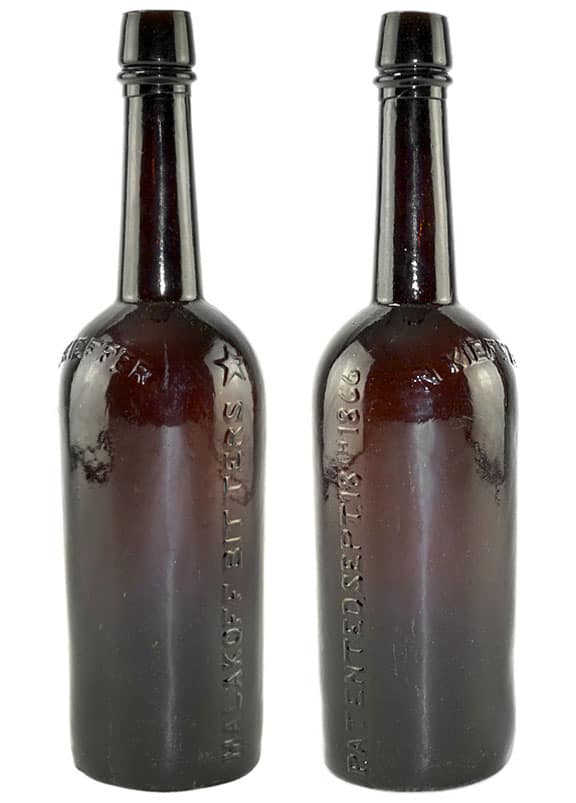
14. “N. KIEFFER – MALAKOFF BITTERS (five pointed star) – PATENTED SEPT. 18TH 1866”, (Ring/Ham, M-15), Louisiana, ca. 1965 – 1875, deep reddish amber, 11 5/8”h, smooth base, applied double collar mouth. A 1/4” chip/bruise is off the edge of the base, also a 1” area of roughness. Extremely rare, having only one auction record. Purchased from a construction worker who brought it to a New Orleans Bottle Show. Sidney Genius Collection. – Glass Works Auctions | Auction #128
The Malakoff (sometimes spelled incorrectly with one ‘f’) brand spans 10-15 years or so and I do not have a bottle. Very strange, as I have been looking since I obtained the trade card a number of years ago.
I believe ‘Malakoff’ in this case comes from the Battle of Malakoff which was a major battle during the Crimean War, fought between French-British forces against Russia on 7 September 1855 as a part of the Siege of Sevastopol.
Most information about the owner of this brand leads us to a Nicholas Kieffer (parents Nicholas Kieffer and Elizabeth Fual) who was born in 1796 in Alsace, France. Nicholas eventually came to the United States and settled in New Orleans, Louisiana. Kieffer may have served as a Private 2nd Company in the 4th Regiment French Brigade, Louisiana Militia and was reported in business in 1866 as a manufacturer of wholesale liquors. That same year, on 18 September 1866, he received a patent for Malakoff Bitters. In the mid to late 1870s, after Kieffer’s death, the brand was represented by Alphonse Walz of New Orleans and A. E. Neuberg of Chicago, which I find odd. The brand also moved into Texas and was marketed out of San Antonio in 1882.
There are three listing in Bitters Bottles and Bitters Bottles Supplement that reference this New Orleans bitters. This trade card will be referenced in Bitters Bottles Supplement 2.
M.14 MALAKOFF BITTERS / N. KIEFFER ( au ) / N. O. // PATENTED SEPT. 18TH 1866 //
11 1/2 x 3 (7 1/2)
Round, Amber, LTC and LTCR, Applied mouth. Extremely rare
(New Number) M.14.5 // MALAKOFF BITTERS (motif of star) // PATENTED SEPT. 18TH 1866 //
11 3/8 x 3 (7 1/2)
Round, Amber, LTCR, Applied mouth. Extremely rare, Embossed vertically bottom to shoulder.
M.15 MALAKOFF BITTERS / N. KIEFFER ( au ) // PATENTED SEPT. 18TH 1866 //
11 1/2 x 3 (7 1/4)
Round, Amber, LTC, Applied mouth, Rare
Chicago Directory 1876, A. E. Neuberg Co., Sole agent in the U.S.
Trade Mark No. 5,936, dated April, 1878 by Alphonse Walz, New Orleans
M.15.5 MALAKOFF BITTERS (star) // c // s // N. KIEFFER // PATENTED SEPT. 18TH 1866 //
11 1/2 x 3 (7 1/4)
Round, Amber, LTC, Applied mouth, Metallic pontil mark, Very rare
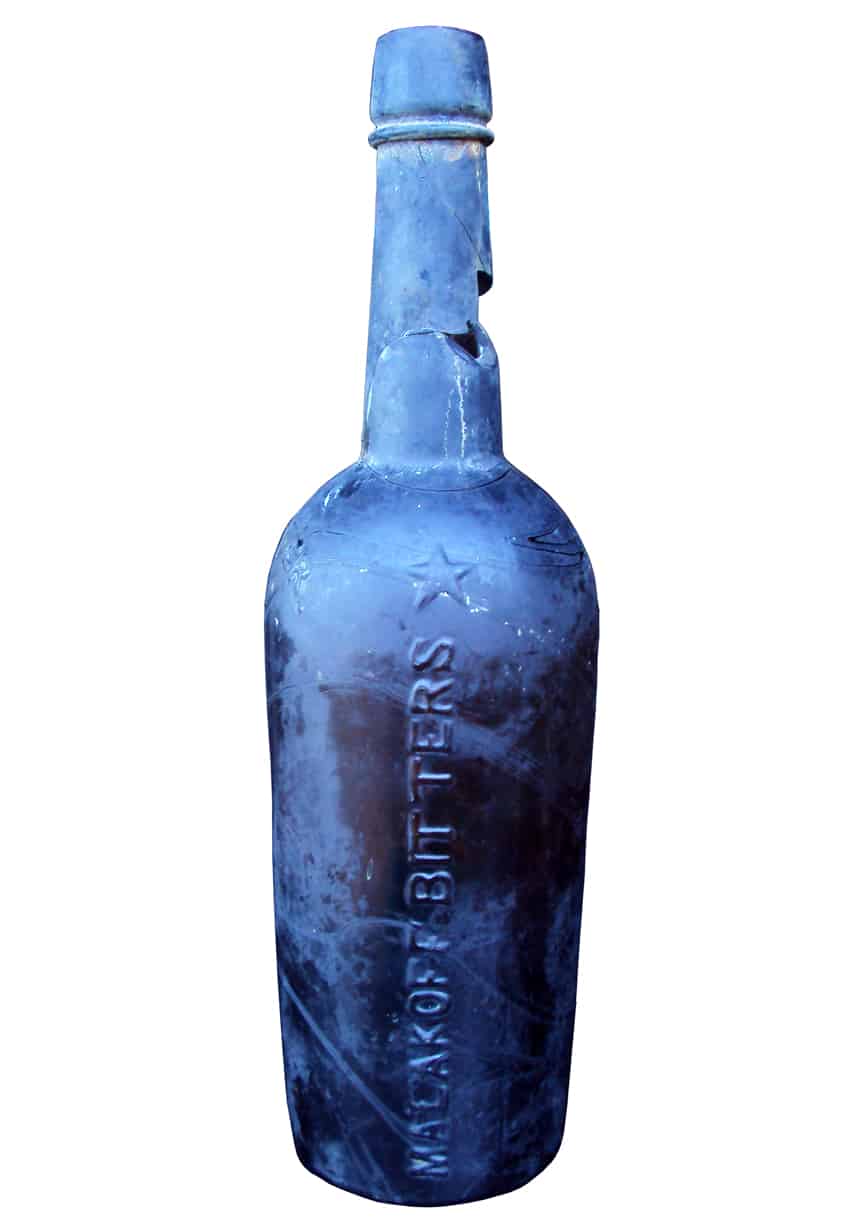
M 14.5 Malakoff Bitters (Star) / Patented Sept. 18th 1866 (Notice that this example is not either of the three bottles listed in Ring in Ham noted above) From Wayne Loschen – Just saw your article about the Malakoff Bitters and thought you might like to see one dug by my sons and me in Shreveport, La. It was uncovered at the site of the new Millenium movie studios during the early construction stages. Unfortunately the excavator separated the top from the bottom of the bottle. We managed to find the top a few days later and glued it back on.
United States Patent Office
N. KIEFFER, OF NEW ORLEANS, LOUISIANA.
IMPROVED MEDICINE.
Specification forming part of Letters Patent No. 5,806, dated September 18, 1866.
To all whom it may concern.-
Be it known that I, N. KIEFFER, of New Orleans, in the Parish of Orleans and State of Louisiana, have invented a new and Improved Medical Compound; and I do hereby declare that the following is a full, clear, and exact description thereof, which will enable those skilled in the art to make and use the same.
The present invention relates to a new and improved medical compound or bitters which is in the form of a liquid.
This compound or bitters is composed of the following ingredients mixed together in or about the porportions named, and in a manner to be hereinafter explained four ounces lemon-peel, four ounces cinnamon, two ounces orange, two ounces galanga root, two ounces calamus-root, two ounces angelica-root, two ounces zedoary, four ounces cloves, five ounces anise-green, two ounces anise-star, one pound coriander, one-half pound chamomile-flowers, one-fourth pound cassia buds or flowers, one pound juniper-berries, one-half pound gentian root, one pound licorice root, one fourth pound laurel or bay berries, one pound caraway seeds, one-half pound peppermint herb, two pounds burnt coffee, three pounds sugar, cooked or boiled to syrup, and twenty-five gallons of whisky.
Each herb above mentioned is first soaked or steeped for about forty-eight hours in natural spirit or alcohol, and then severally distilled in a copper alembic, after which the several products of distillation thus obtained are mixed together, and, being diluted with a sufficient quantity of water to render the compound palatable and potable, the three pounds of sugar previously cooked or reduced to a syrup is then added, by which the desired color is produced, and a compound or bitters obtained which, as a beverage, is most healthy, invigorating, and beneficial.
I claim as new and desire to secure by Letters Patent- The medical compound composed of the ingredients herein named and mixed togetherin or about the proportions named.
The above specification of my invention signed by me this 30th day of May, 1866.
N. KIEFFER.
Witnesses JOHN HENRY GROTE, J. GRAEFF.
Battle of Malakoff
The Battle of Malakoff was a major battle during the Crimean War, fought between French-British forces against Russia on 7 September 1855 as a part of the Siege of Sevastopol. The French army under General MacMahon successfully stormed the Malakoff redoubt, whereas a simultaneous British attack on the Redan to the south of the Malakoff was repulsed. In one of the war’s defining moments, the French zouave Eugène Libaut raised the French flag on the top of the Russian redoubt. The Battle of Malakoff resulted in the fall of Sevastopol on 9 September, bringing the 11-month siege to an end. [Wikipedia]
Read about another bitters related to Crimea: “In Hoc Vinces” – Romaine’s Crimean Bitters
The Duke of Malakoff
OBITUARY; The Duke of Malakoff. Published: June 7, 1864, New York Times
By the European arrivals yesterday, we have intelligence of the death of the Duke of Malakoff, more widely known as General and Marshai PELLISSIER, the Commander-in-Chief of the French army in the siege of Sebastopol. Marshal PELISSIER was in his 70th year at the time of his death, having been born near Rouen, in 1794. After completing his military studies at St. Cyr, he was gazetted a Sal-Lieutenant in 1815. Subsequently he saw service in Spain in 1823, achieved the rank of Captain in 1828, served in Greece and afterward in Algeria up to 1832, when he returned to France for the recruitment of his health. In 1839 he returned to Algeria, where he remained in active service for a period of 16 years, and it was during this period of his career that his name was first given to the world, and in a character which was long regarded as infamous. A viciously hostile tribe of Arabs made themselves conspicuous in their resistance to French authority during the insurrection of 1845. Occupying mountain fastnesses almost impenetrable to the foreign soldier, these tribes were enabled for a long time to harrass the French troops, and to openly defy effective chastisement in return. An expedient — of which it is not known whether PILLISSIER was the actual author — was devised to smoke the Arabs out of their caves, or burn them alive in their retreats if they refused to surrender. Defiance was the only answer of the mountain chiefs to the threat of the French commanding officer, although it is said a large portion of the mountain warriors were willing to surrender. Be this as it may, their delay in listening to the summons determined their fate. PELLESSIER ordered the faggots to be applied to the mouths of the Cauerus, and 600 of the wretched Arabs were thus consigned to a horrible and barbarous death. Various have been the palliations offered for the act, and it may be hoped there were reasons for it sufficient to relieve the perpetrators, at least, of the charge of wanton murder. The act was condemned by the French Minister of War. PELISSIER, however, was not removed from his post in Algeria, but remained there till after the outbreak of the Crimean war, when he was appointed second in command to Gen. CANROBERT. On the 19th of May, 1855, he became Commander-in-Chief of the French force in the Crimea, and his successful storming of the Malakoff, led to the evacuation of the main Sebastopol forts be the Russians, and ultimately to negotiations which ended in peace. Gen. PELESSIER became a Marshal of France and Duke of Malakoff, with a high pension, as the reward of his services, by his own government. At the hands of her Britanic Majesty he received the decoration of a Knight’s Grand Cross; and was subsequently for a short time Minister to England in 1858.

